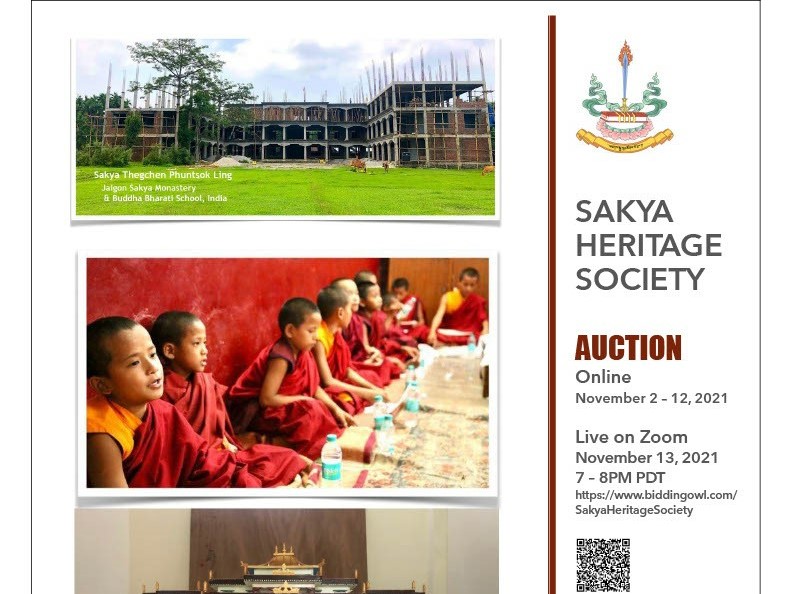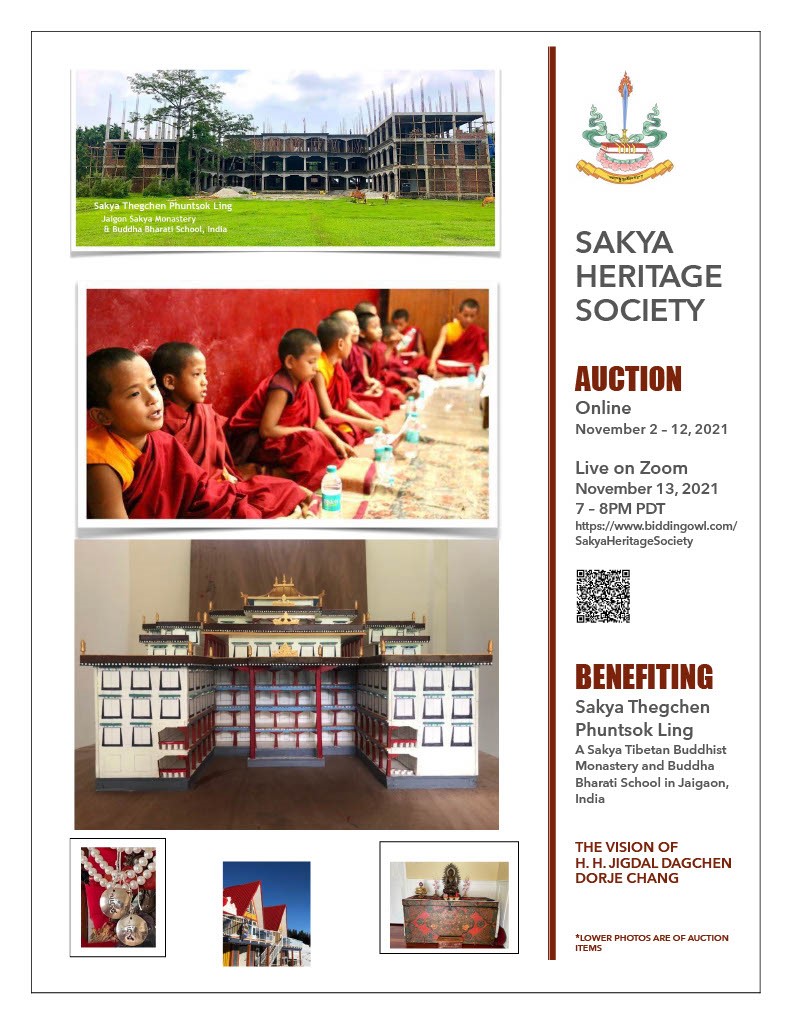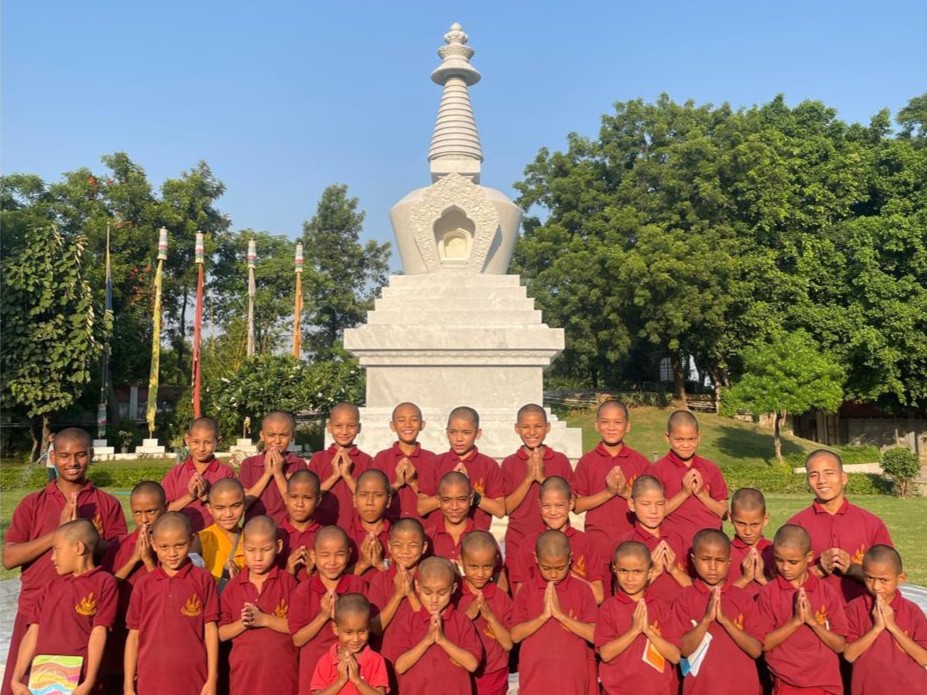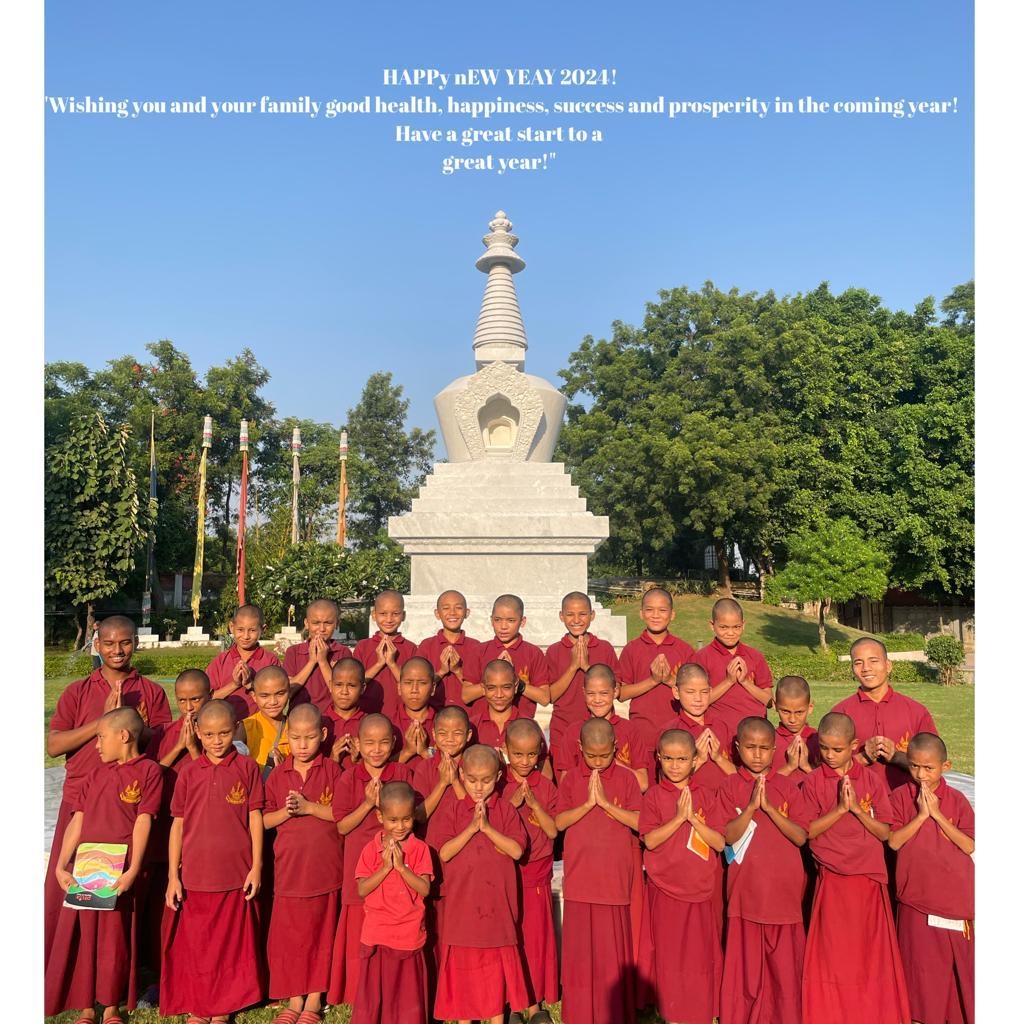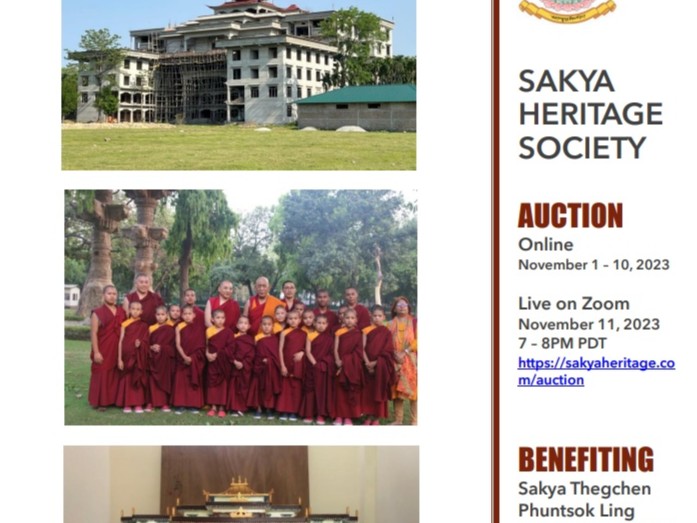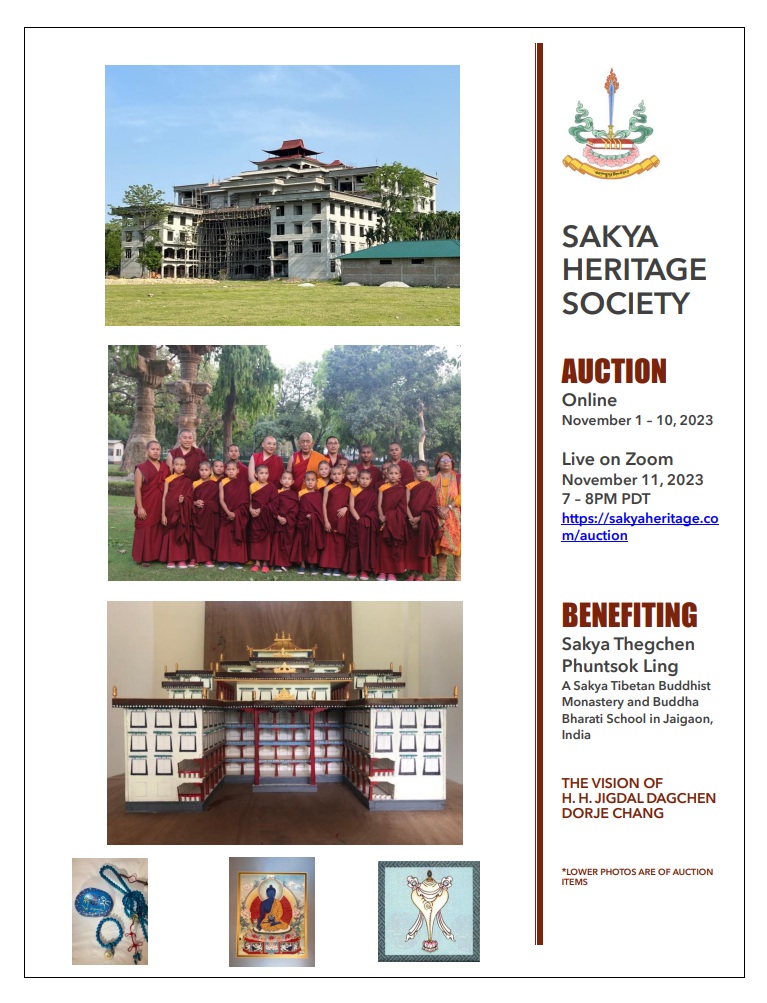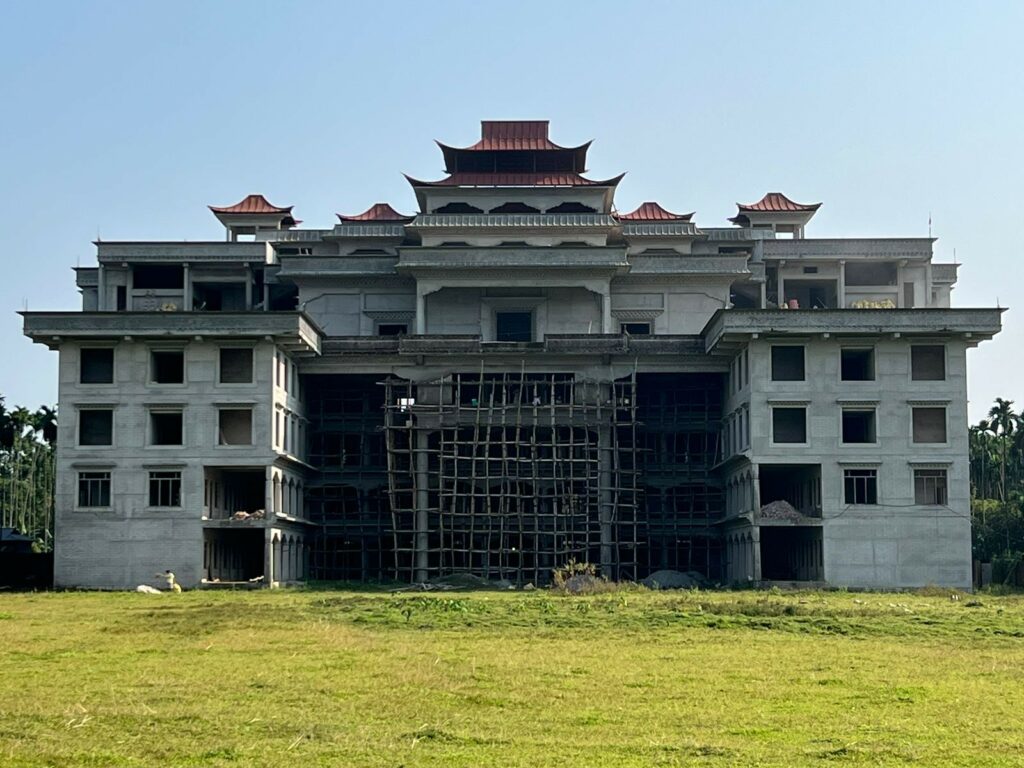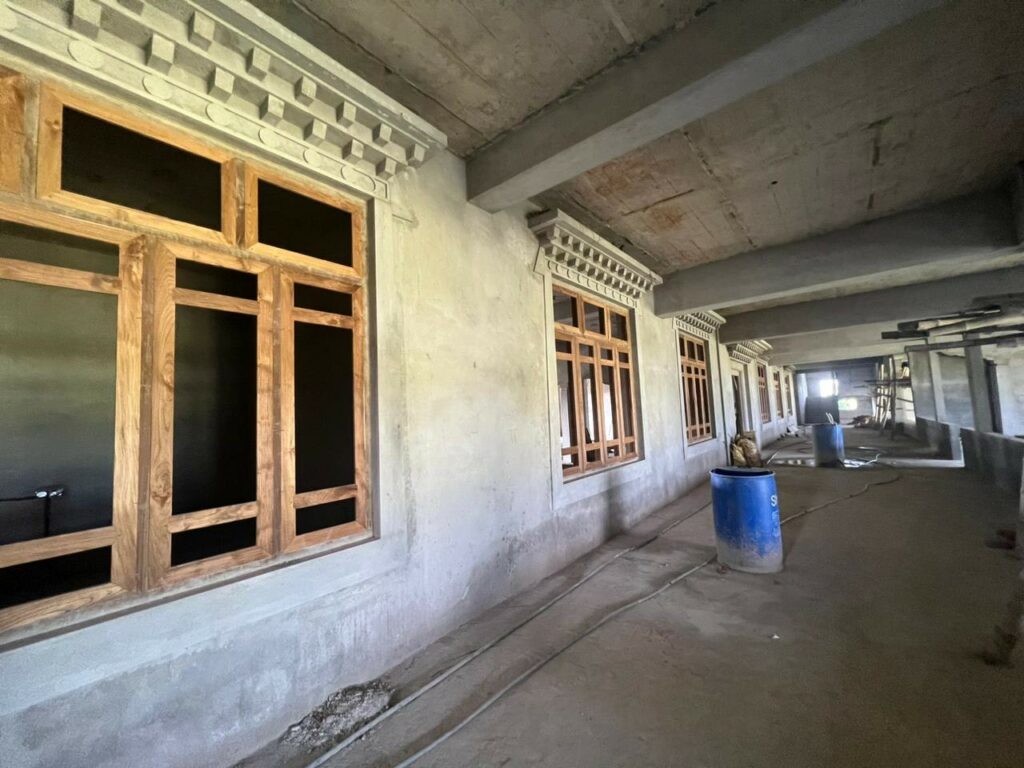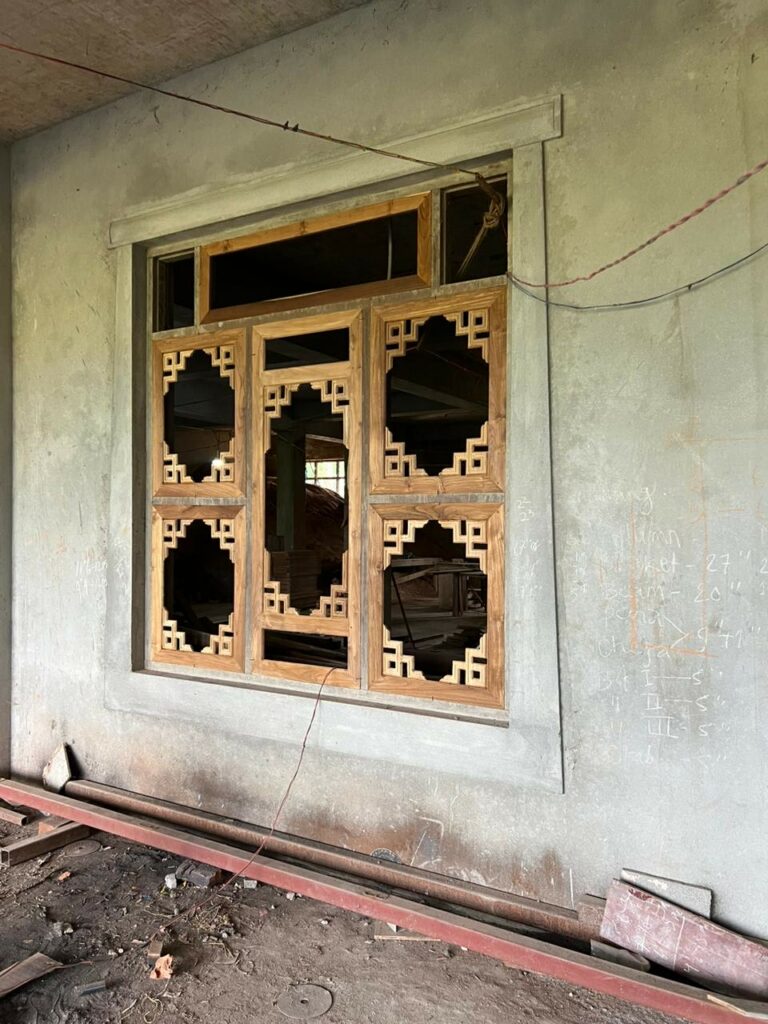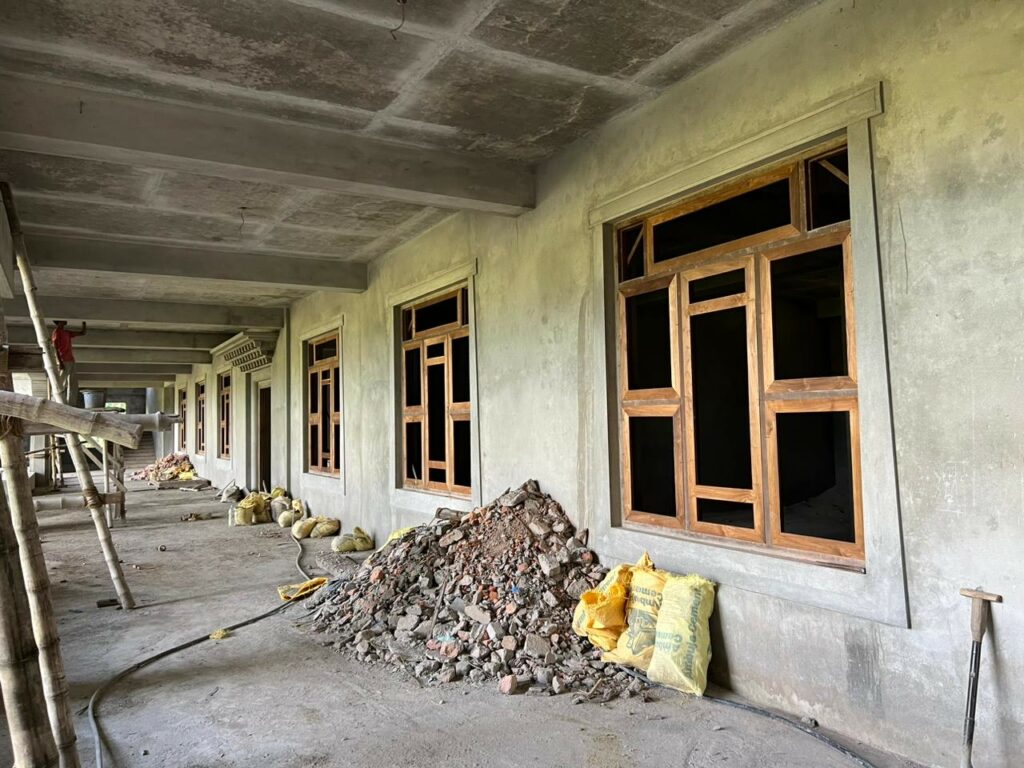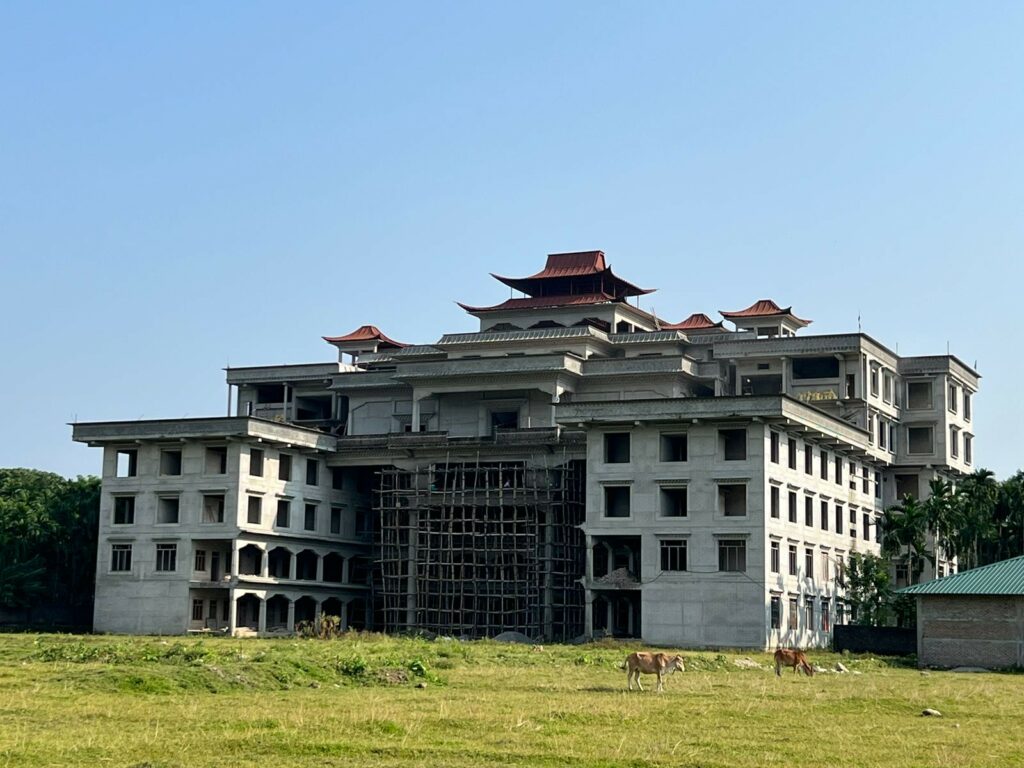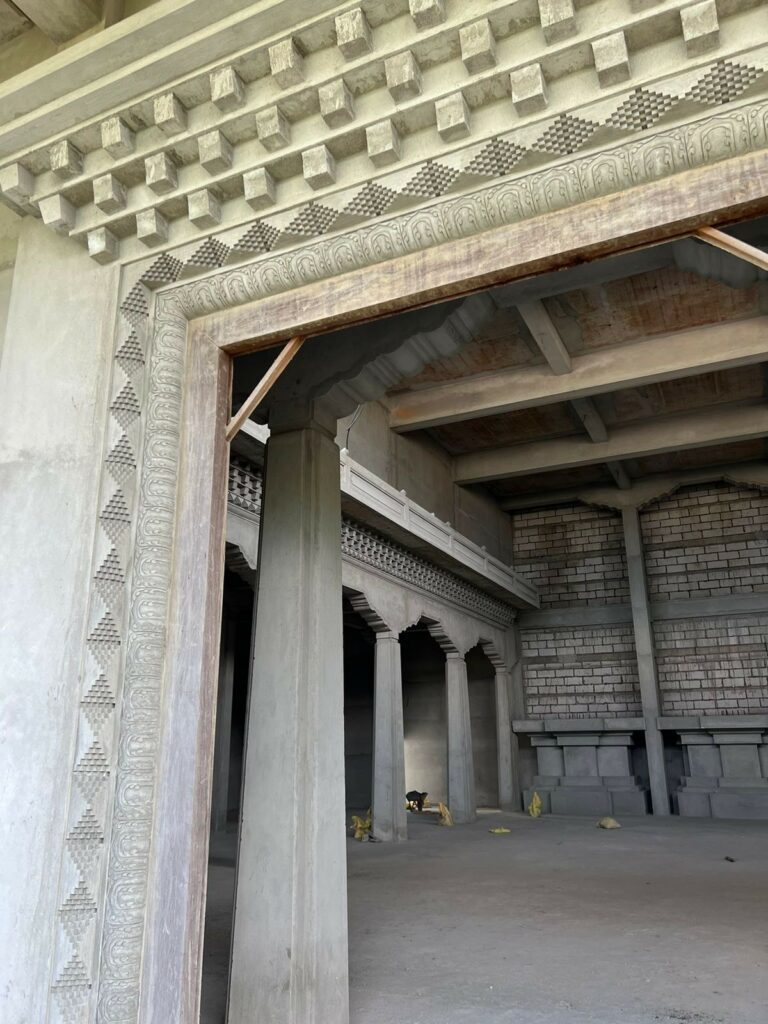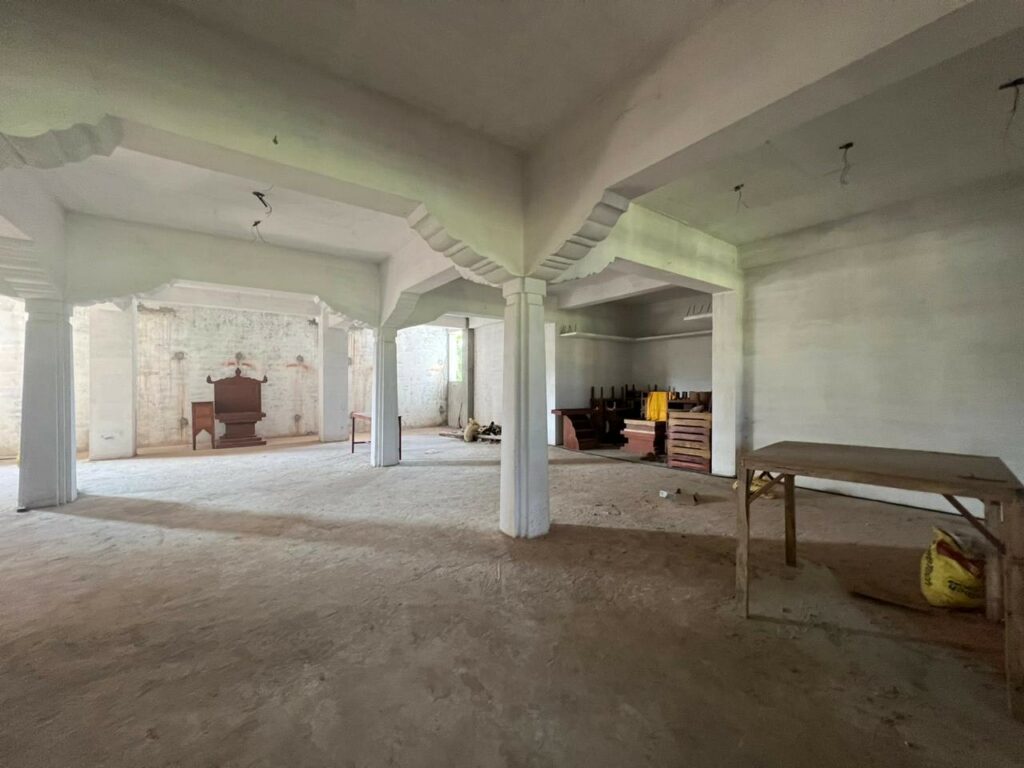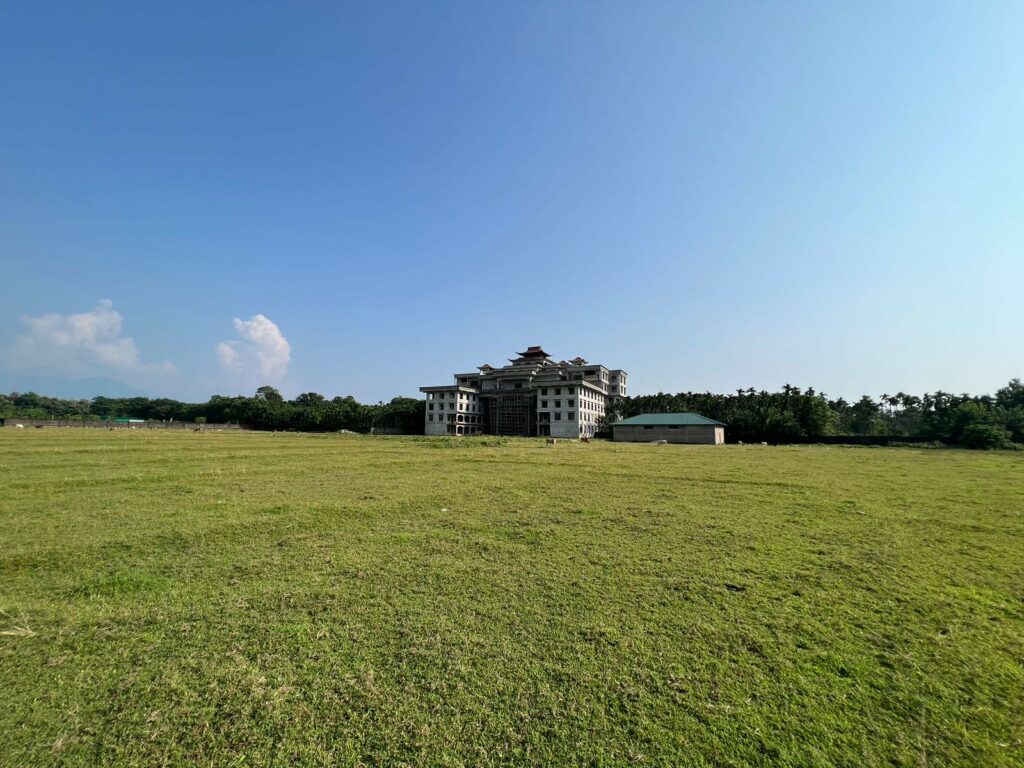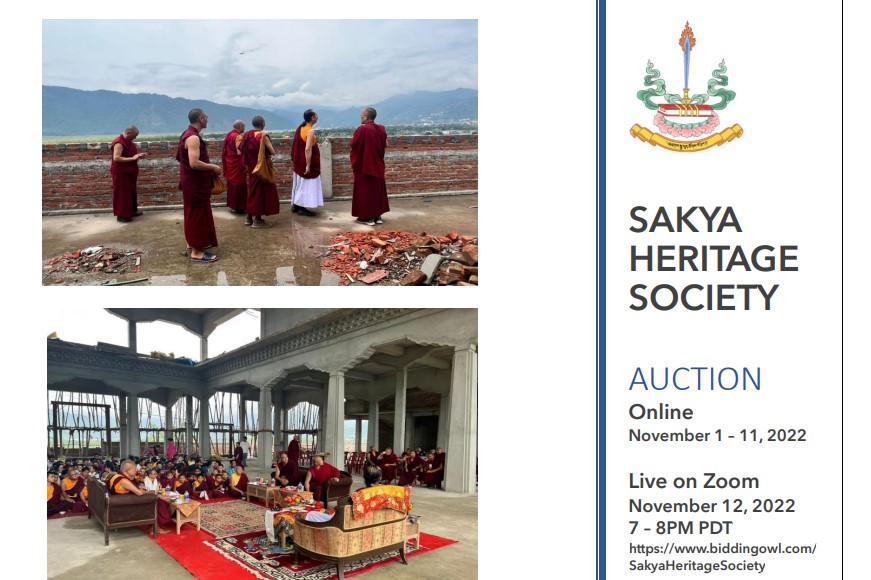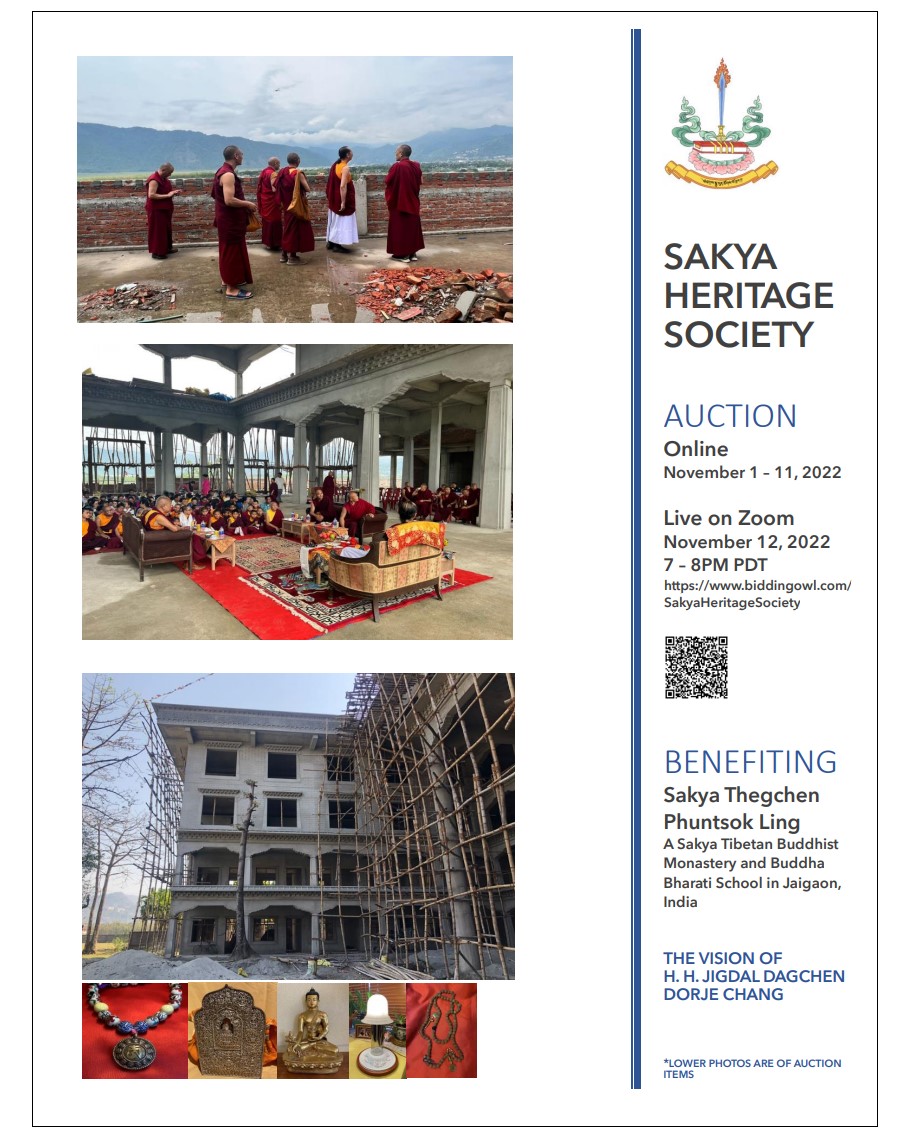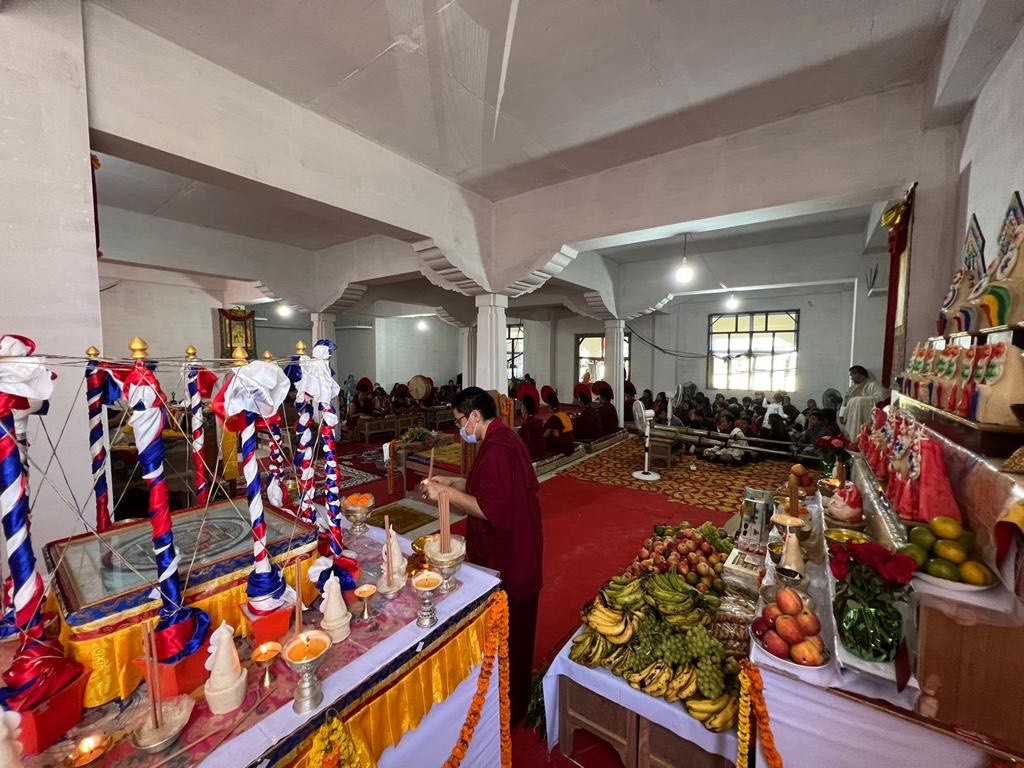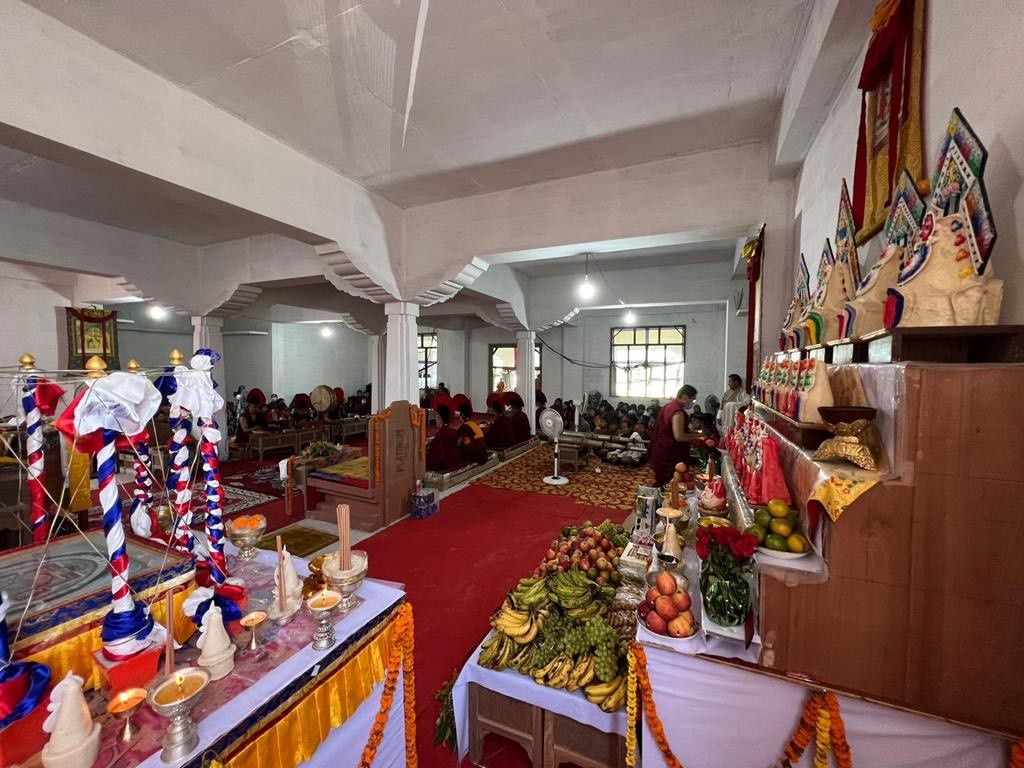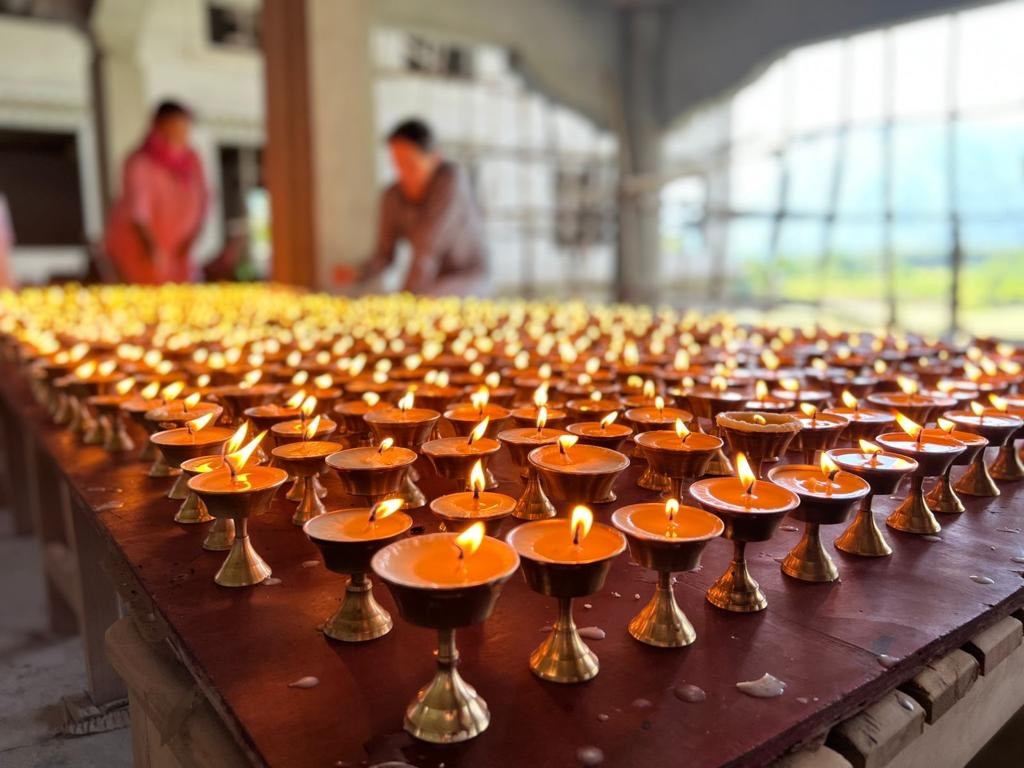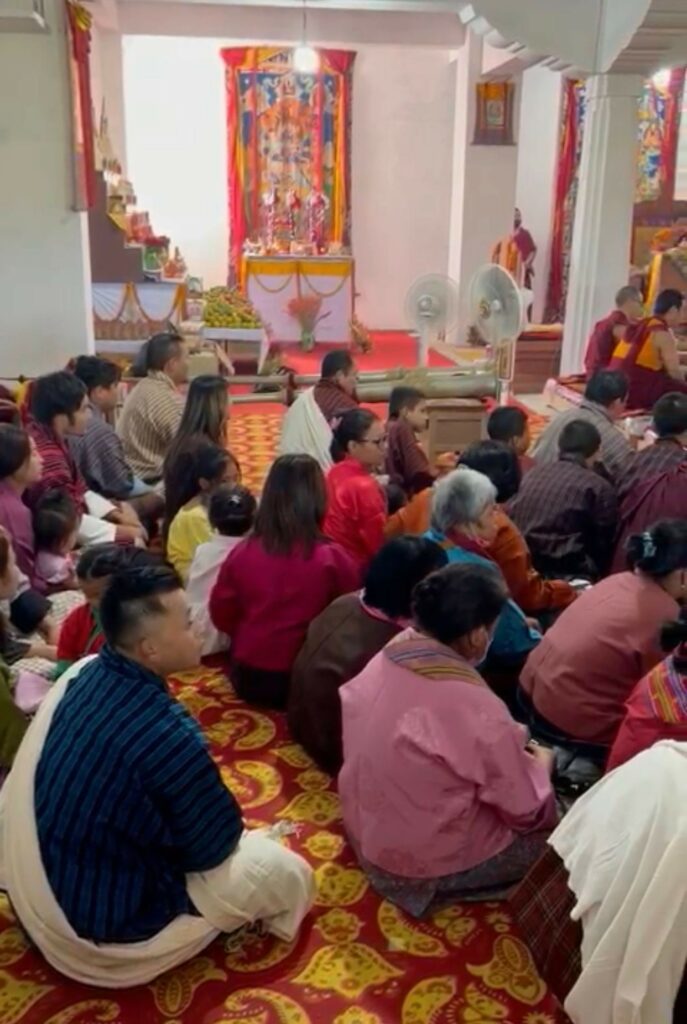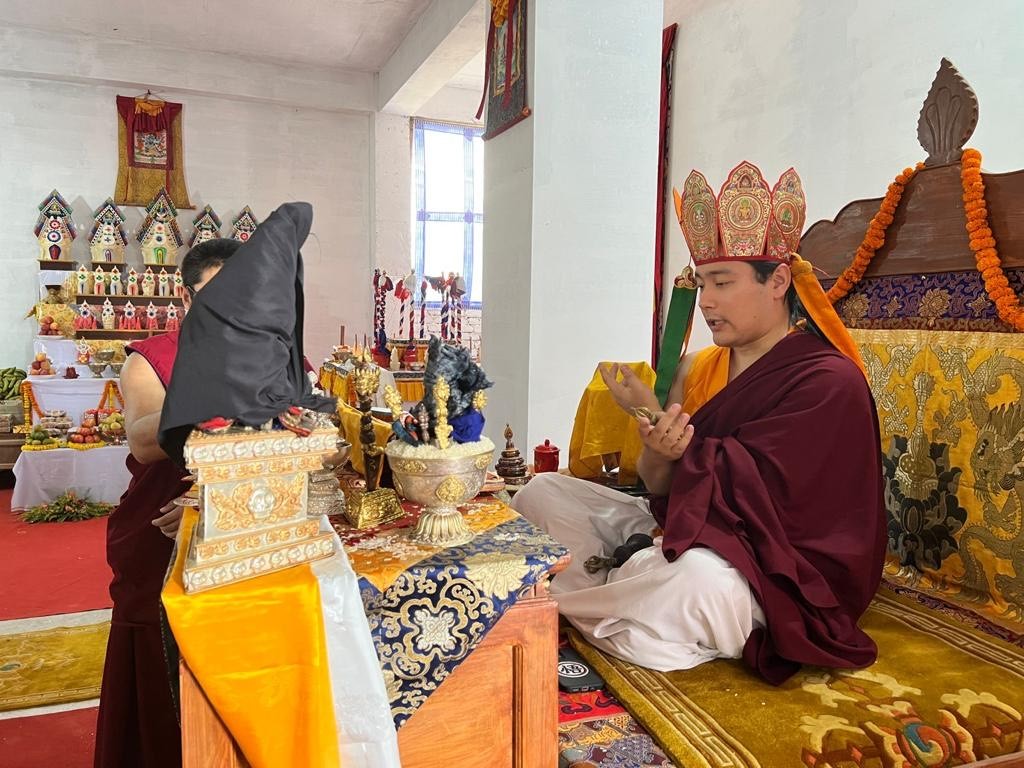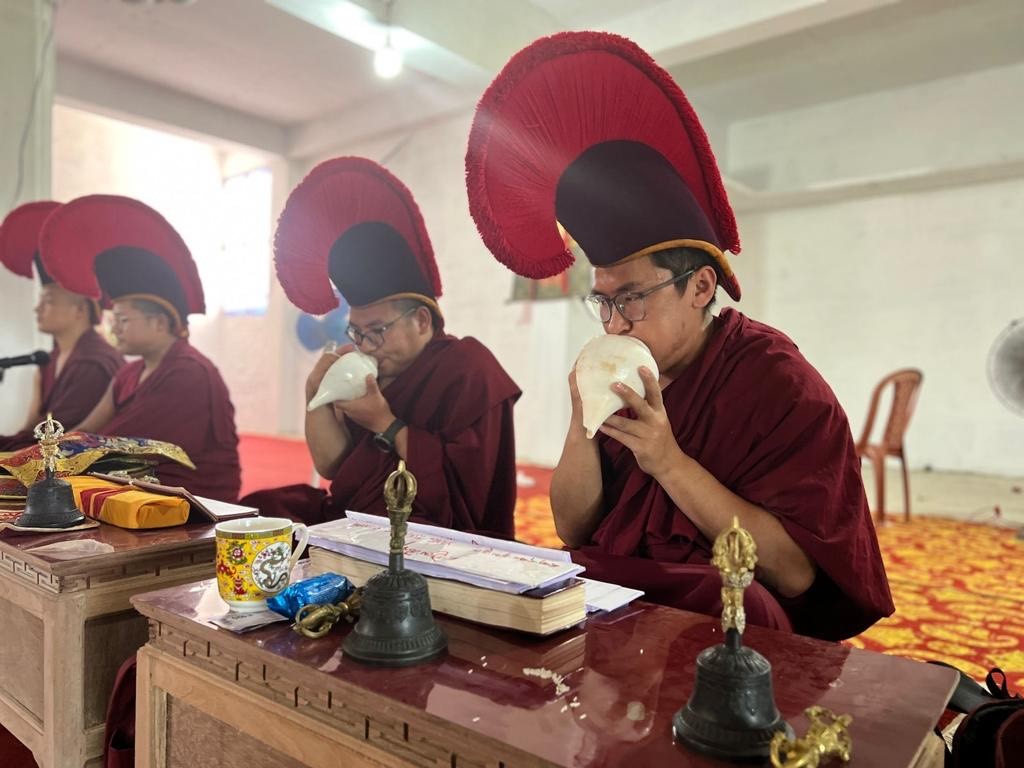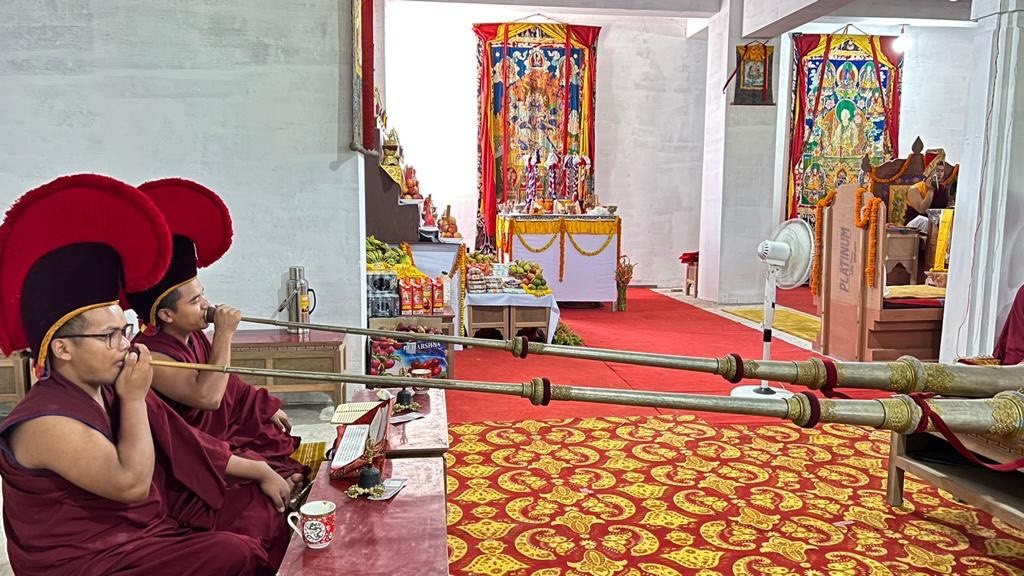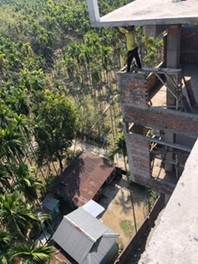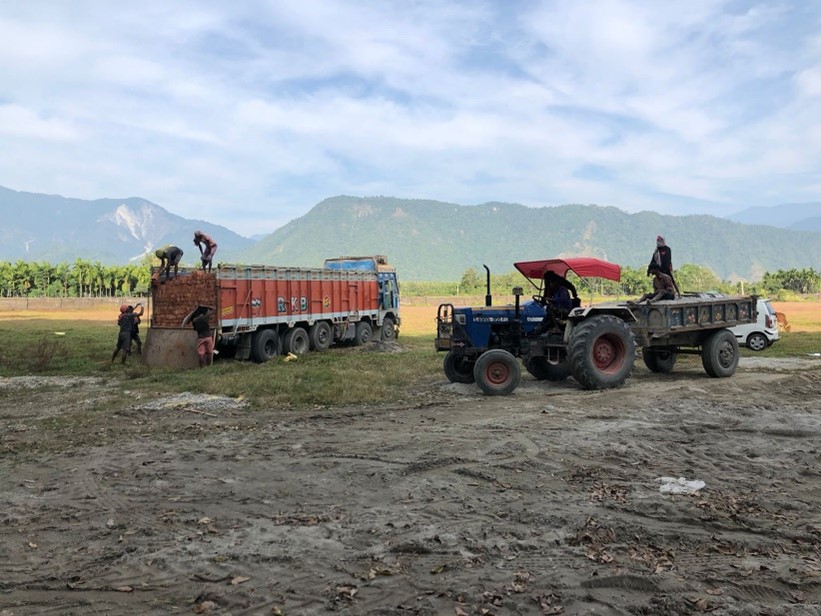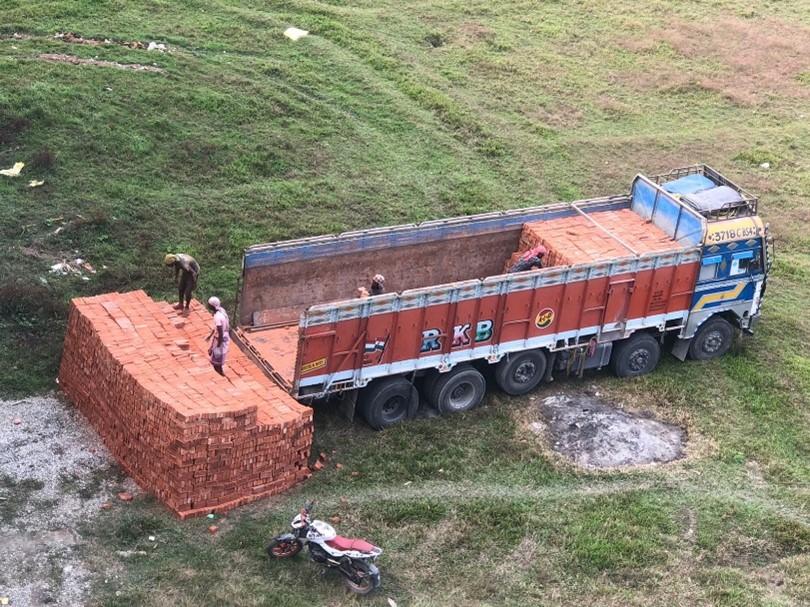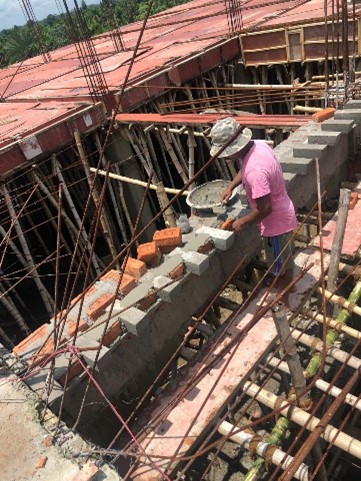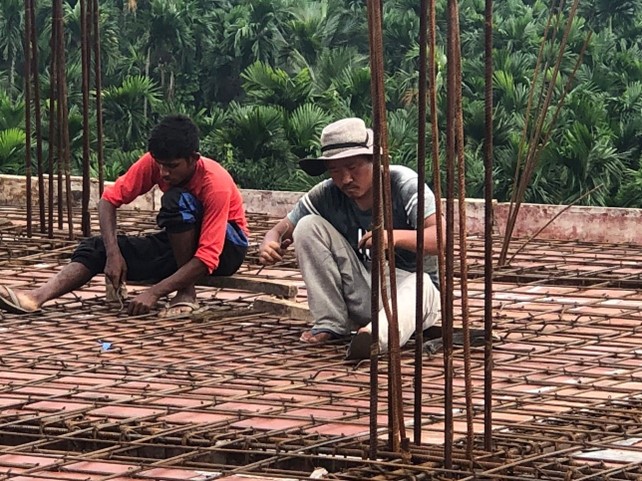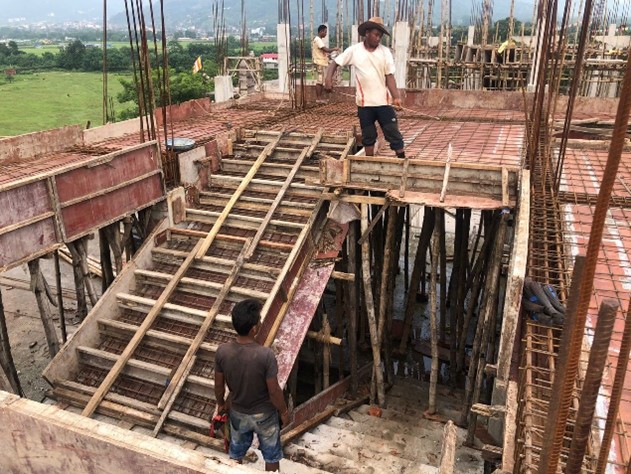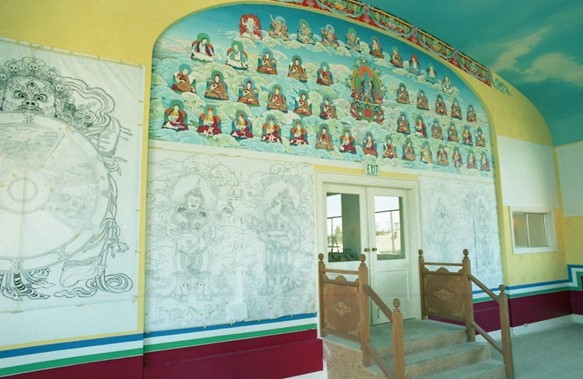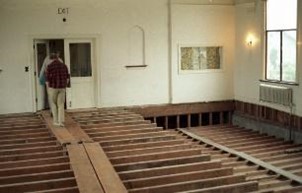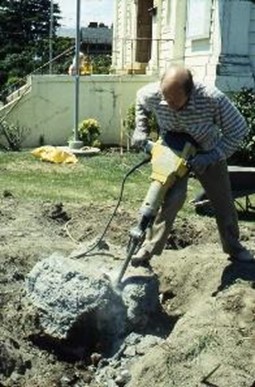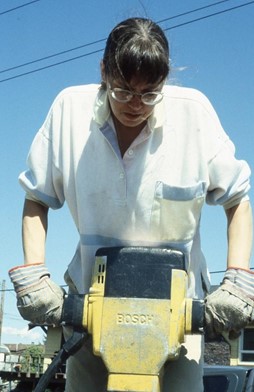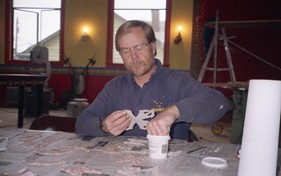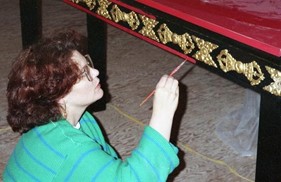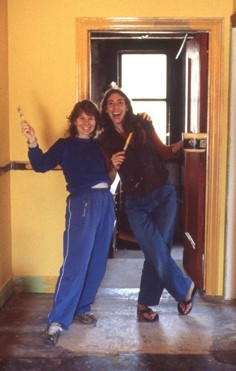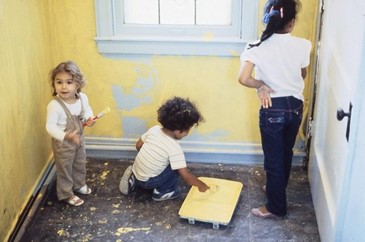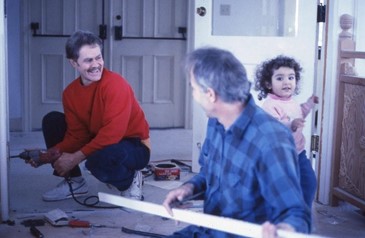Preserving the Sakya Tibetan Buddhist Heritage for future generations
Morning Kora with H.E. Dagmokushog
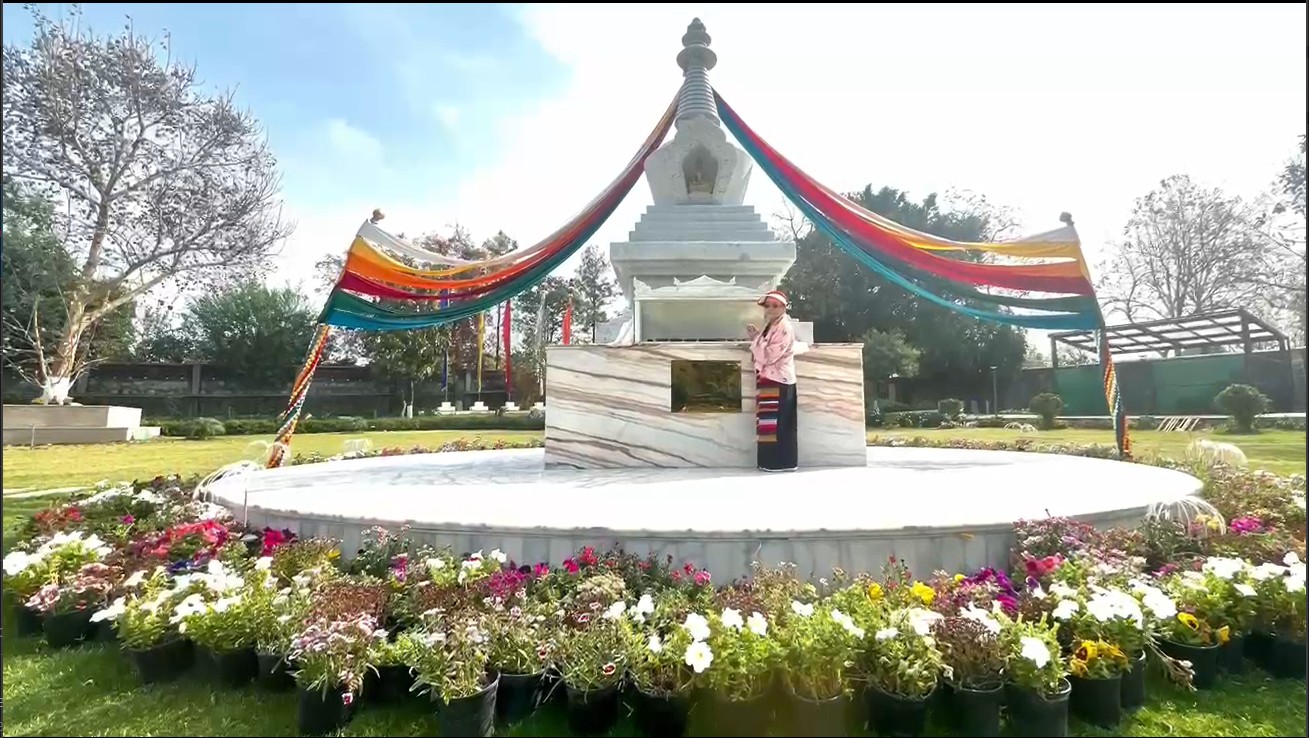
Here is a video of H.E. Jamyang Dagmokushog on her morning Kora around H.H. Dagchen Dorje Chang’s Stupa. Her walk leads her around the entire Sakya Buddha Ashram Complex, where she observes the young monks as they recite their morning outdoor prayers before starting classes.
Circumambulating the Stupa
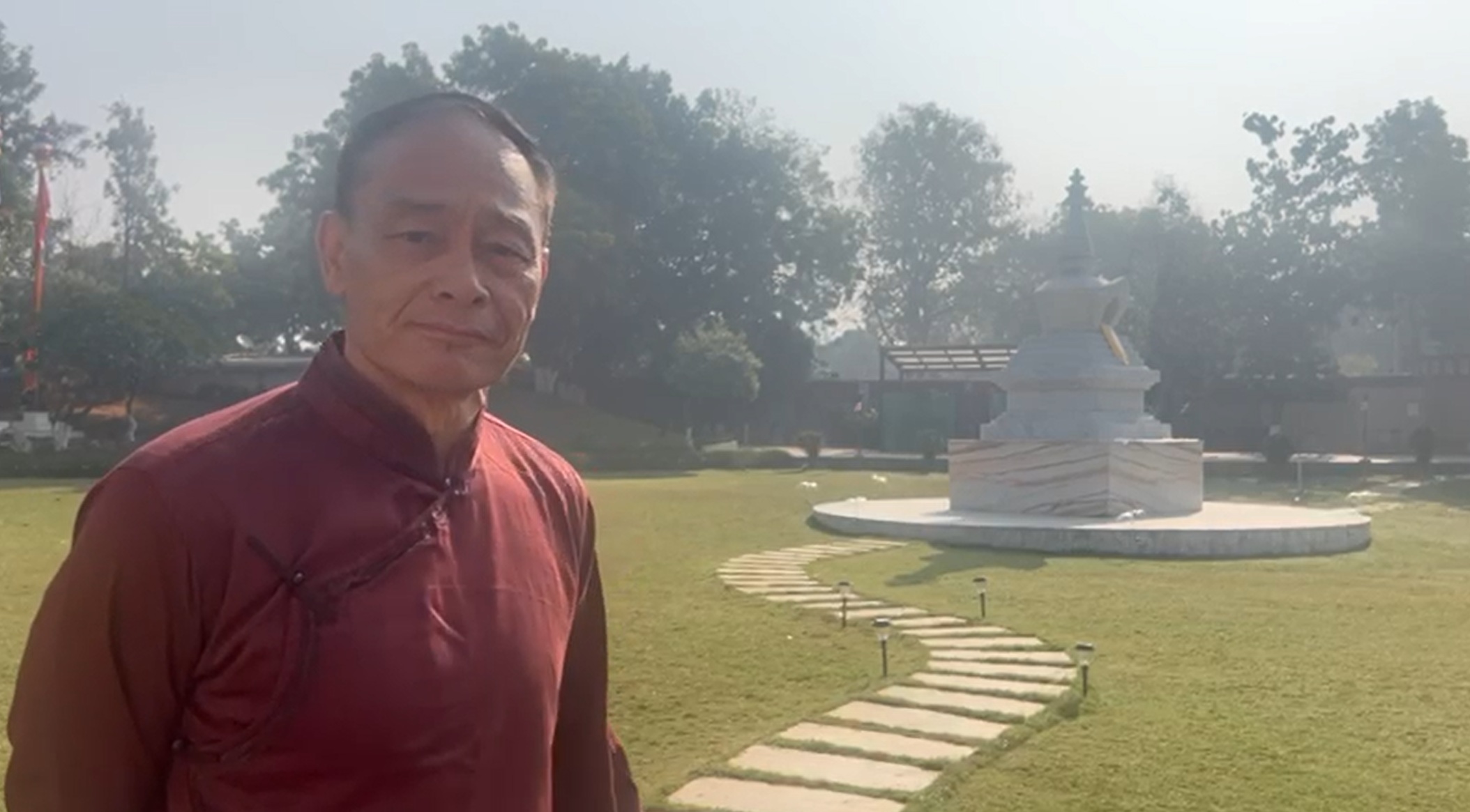
Dhungsey Zaya Rinpoche takes us on a walk around the holy site of the Stupa of His Holiness Jigdal Dagchen Dorje Chang.
Construction Updates
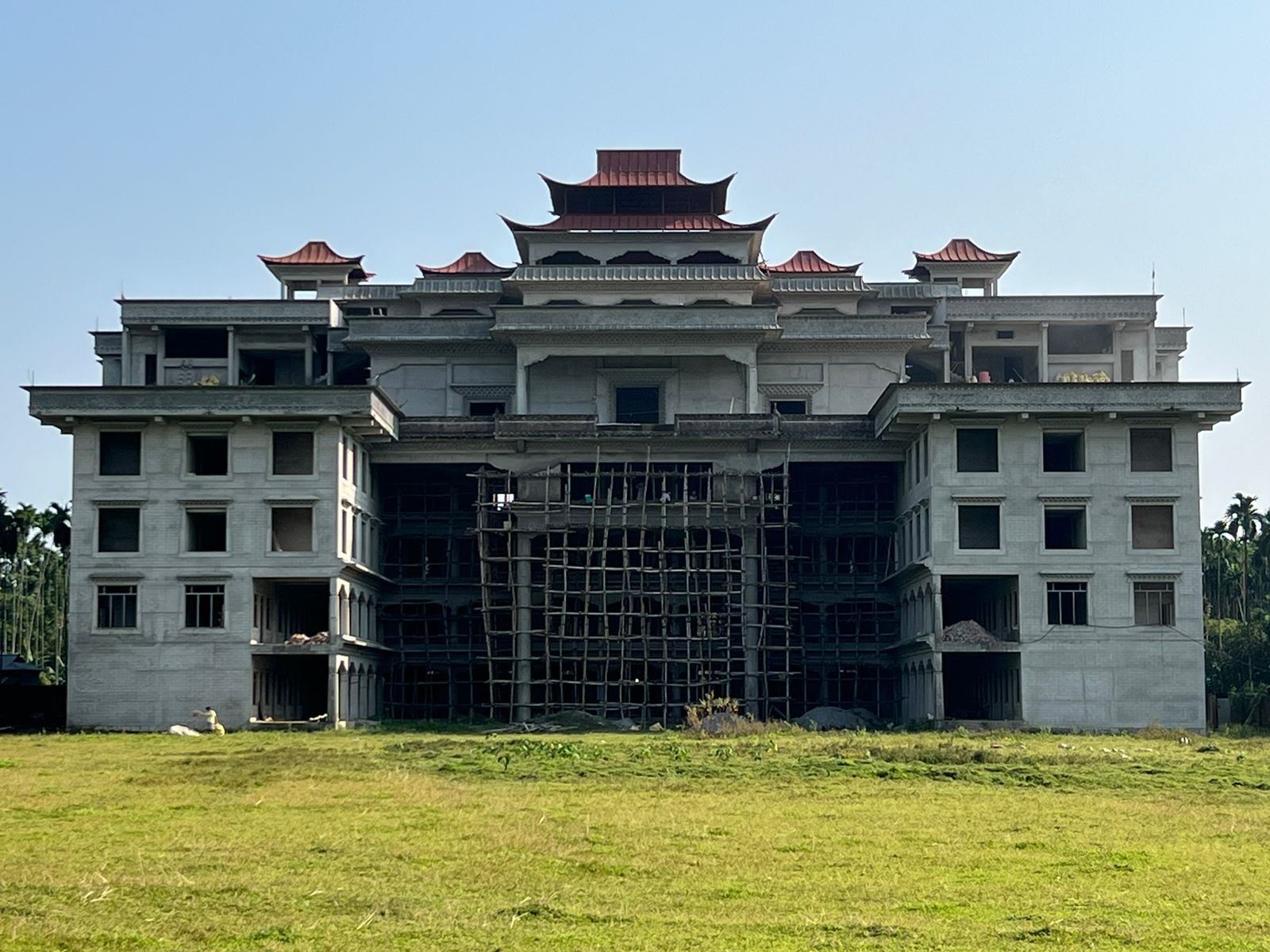
So much progress has been made over the summer and early fall. Below you can see some updates to the general structure, including dramatic decorative updates to the interior.
Stupa Completion
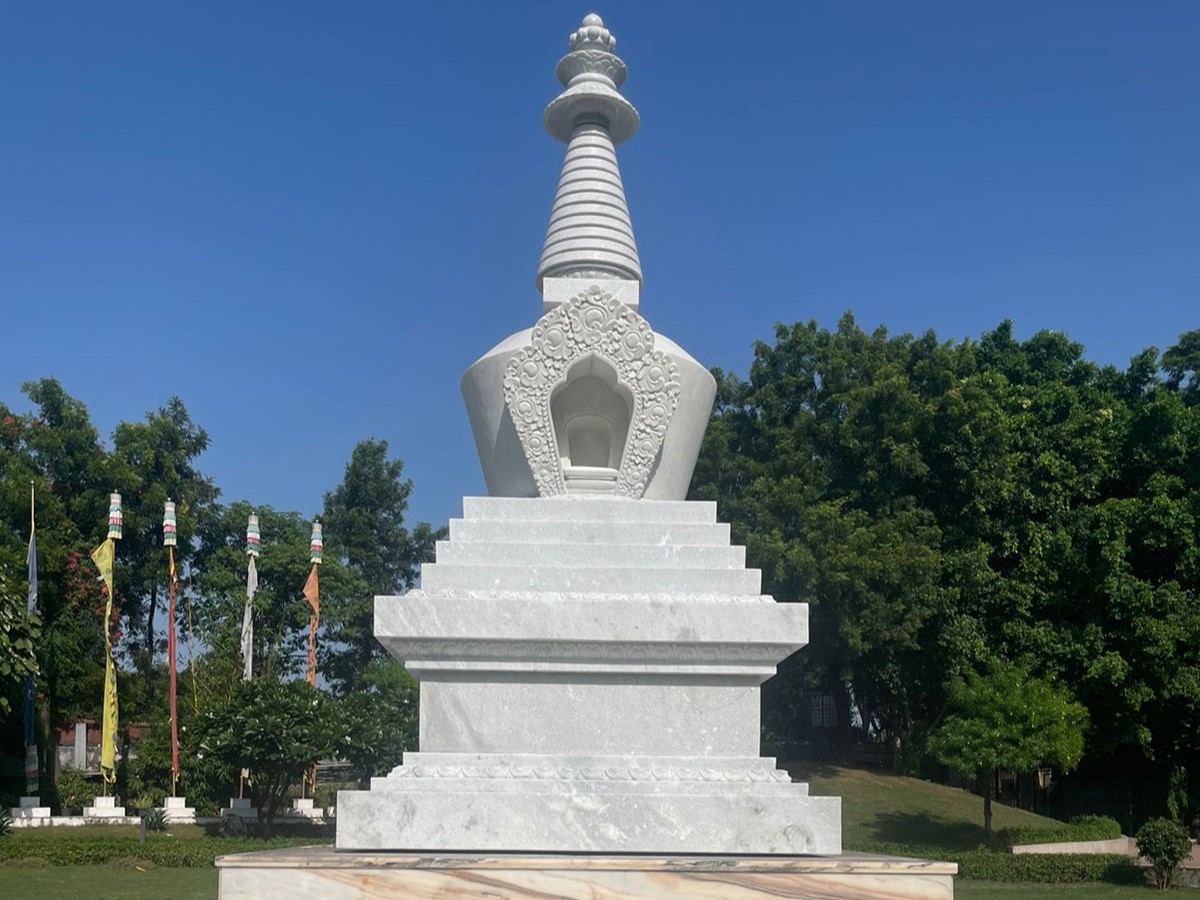
It is with great honor we are announcing the construction completion of H.H. Jigdral Dagchen Dorje Chang’s Stupa at the Sakya Buddha Ashram in New Delhi.
The Ceremonies and Rituals are now being scheduled for the Holy Consecration and will be announced once finalized.
Thank you, SHS Board of Directors
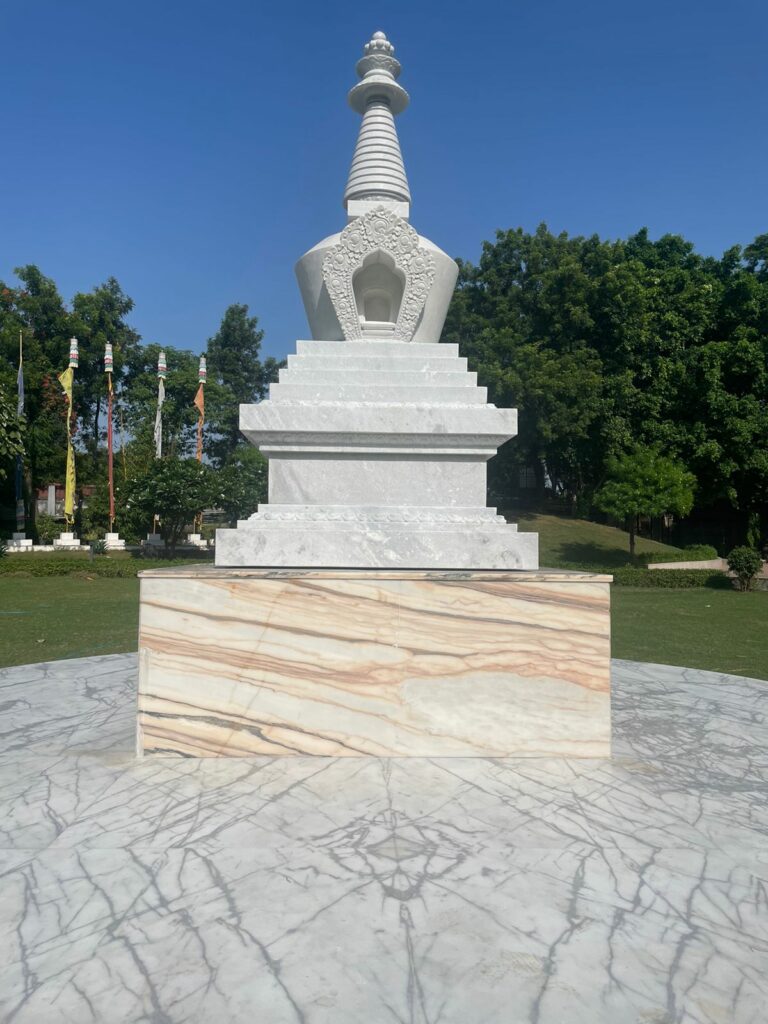
H.E. Dagmo Kusho’s Ghost Stories
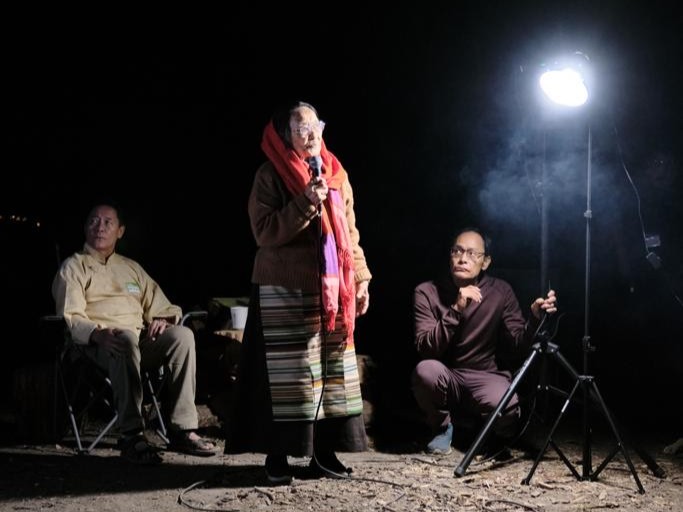
Around the campfire with fellow Marici Fellows, we listened to our beloved Guru, loving Mother, Grandmother and Tara, Her Eminence Dagmo Kushog Jamyang Palmo.
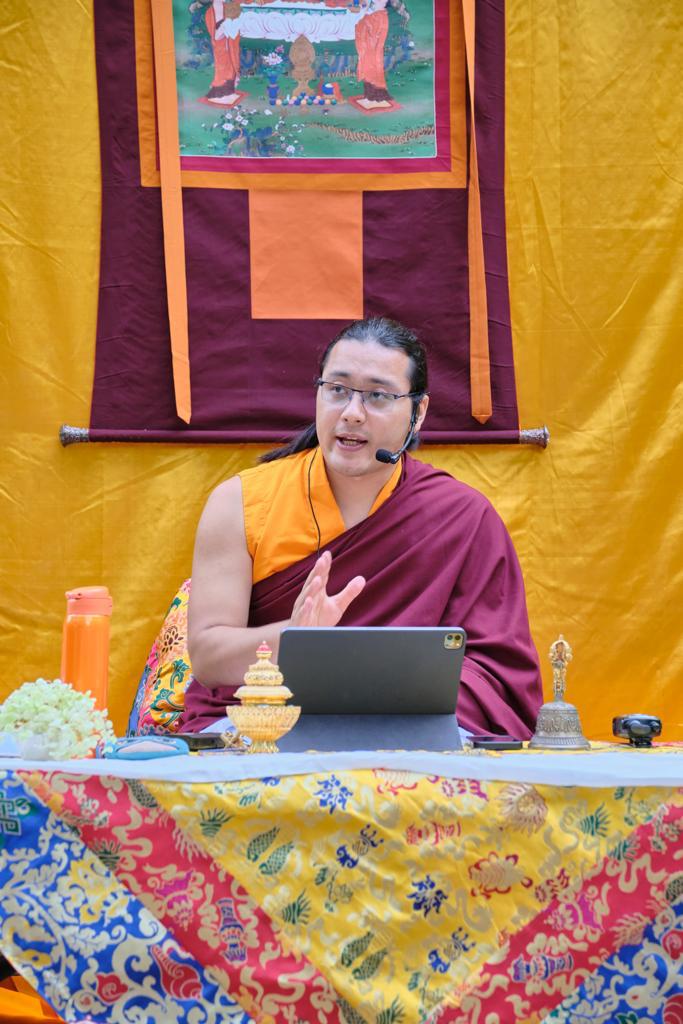
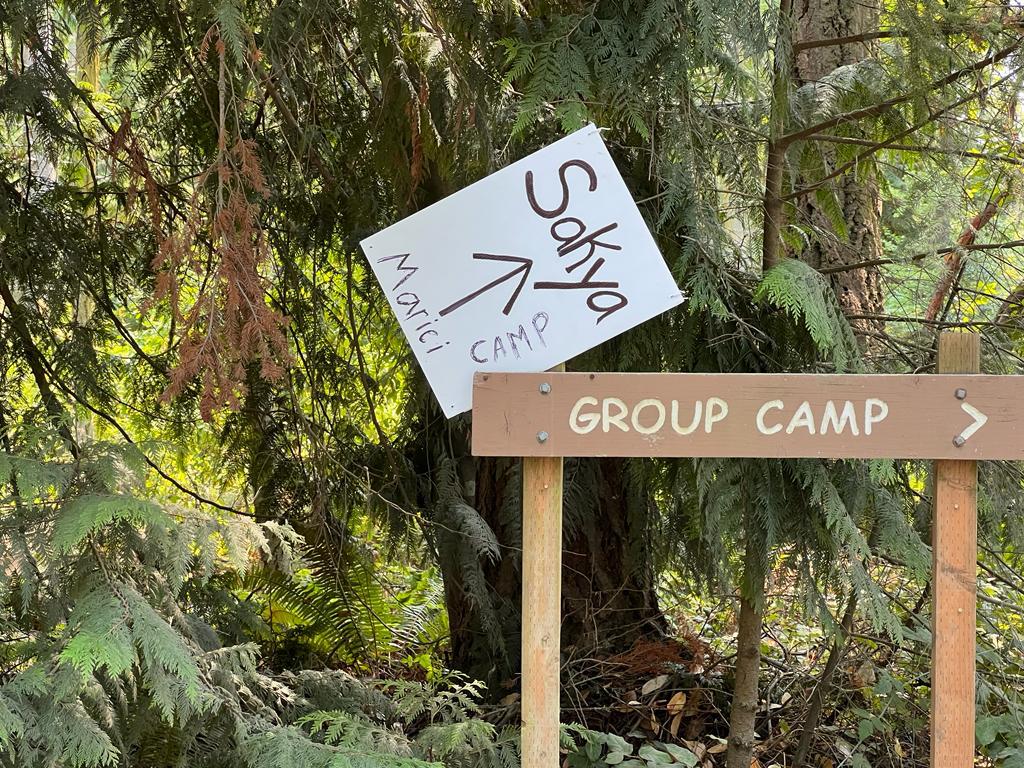
HE Avikrita Rinpoche bestows the Manjushri Namosamgiti Initiation and oral transmission of the Litany of Epithets in Praise of Manjushri on September 6 in the campground amphitheater.
H.E. Dagmo Kushola, who had been in the camp since 8am declared her intention to tell Tibetan Ghost Stories after the Family Feud Game had concluded. It was 9:15 pm. H.E. Zaya Rinpoche had rigged an ingenious mobile sound system with speakers, sound board, projector, projector screen, rechargeable generator, power cords and more. Under the star spangled sky next to the camp fire with all of us gathered around Dagmo Kushola told GHOST stories. Standing behind the backgammon card table holding the hand held mic she boldly spoke into the microphone declaring loudly, “Wait, before you go I would like to tell some ghost story. These are not just stories, these are things that happened in my lifetime.”
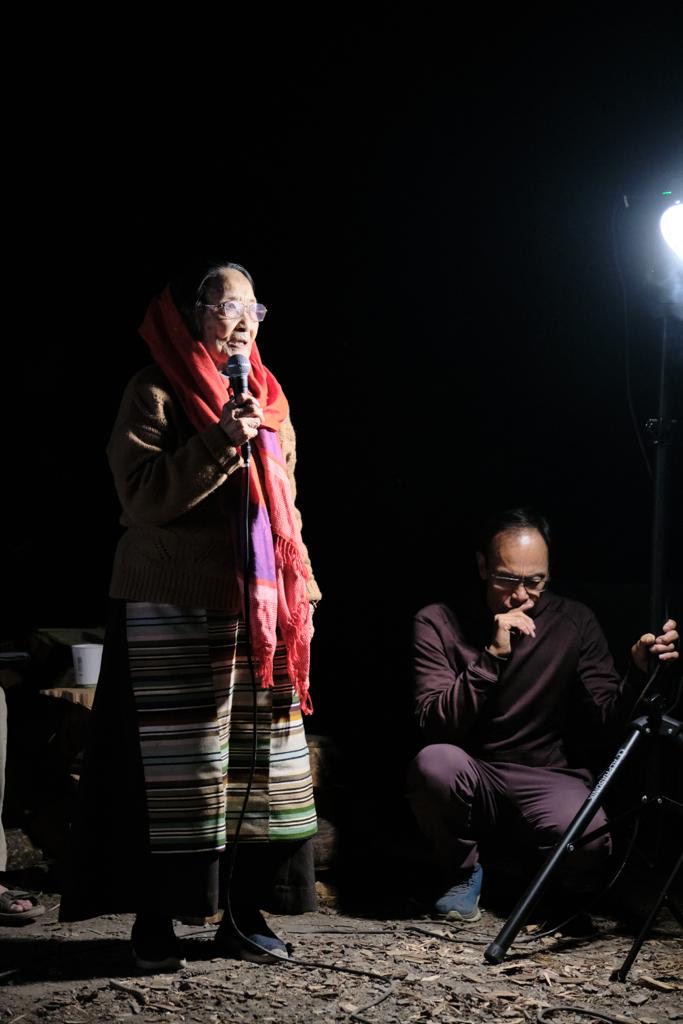
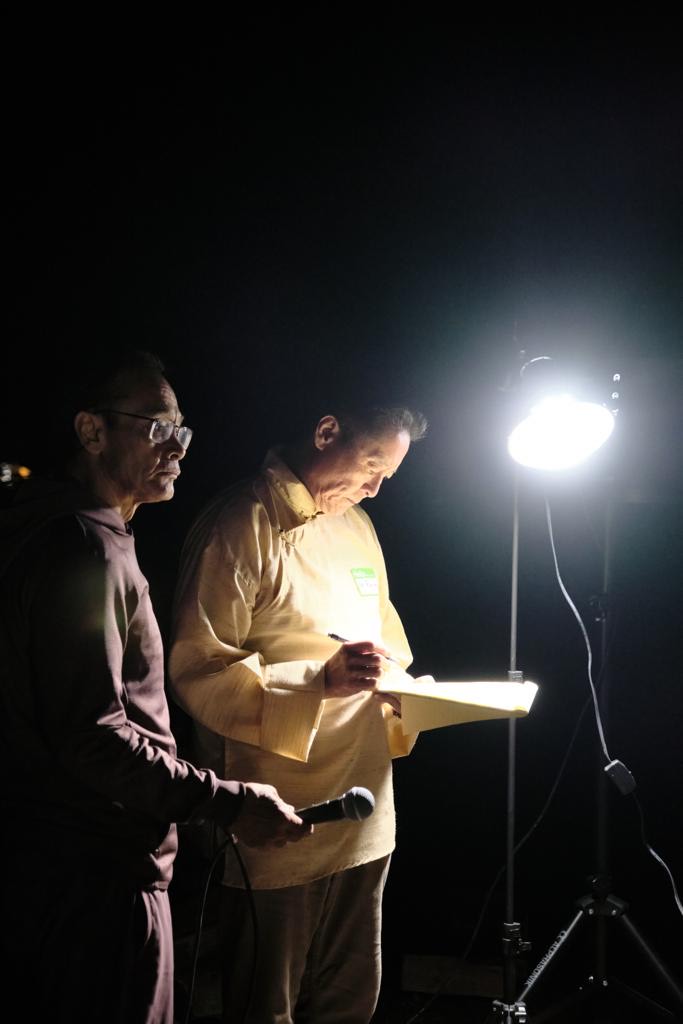
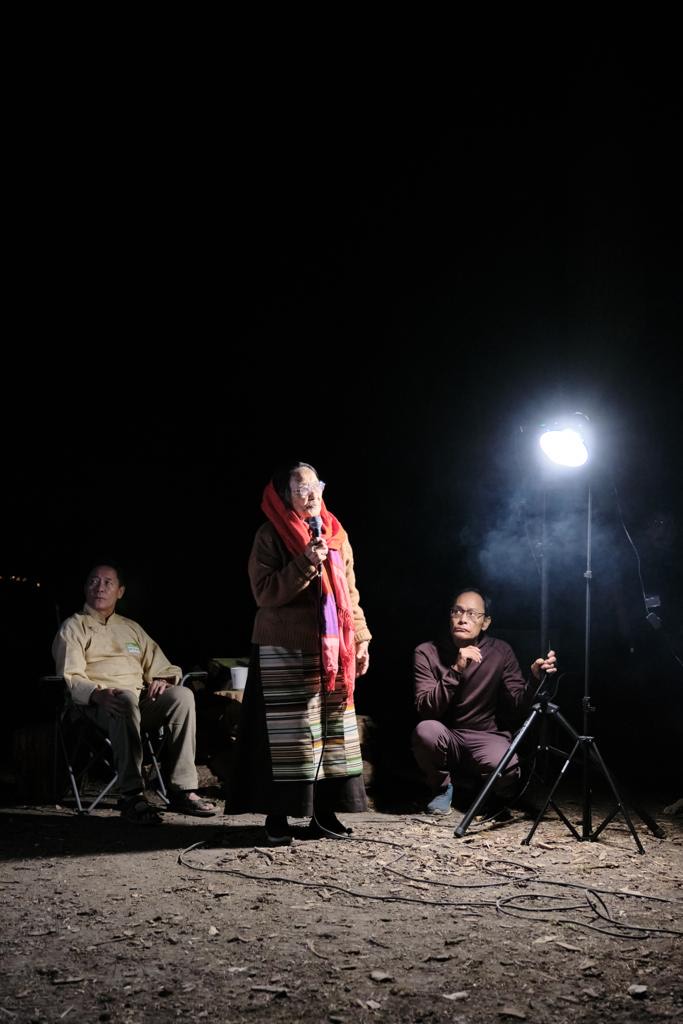
Dagmo Kushola went on, “There are 2 stories I will tell: ghost and demoness.”
Story #1: BAMO
She continues, (paraphrased and transcribed by Laura): Before Padmasambhava came to Tibet there was lots of demons and evil, cannibals – people eating each other. There was no Dharma at all. In the 7th or 8th century Padmasambhava subdued bad spirits and brought them into Buddhism as protectors. Before that, these horrible demons were doing witchcraft, they would gather and take life by the most awful means. One of these was Bamo.
There were three main witches of the Sakya Tradition. Known as “Bamo Sum”, they were: Mamo Rikye, Namka Drolma, and Shangmo. They were in the form of a beautiful lady with a lovely figure, beautiful ornaments, and nice hair but they had an aged face. This was because of their history. Outside of the main Sakya temple in Sakya, Tibet there was a Bamo Temple. Every day, the Sakya Monastery monks would do prayers to benefit Bamo and take care of her with food and torma and other rituals. One time when the caretaker monks had gone to town, they had a little too much chang (in Tibet chang and tea are the most common offering made to guests. Dagmola says, “Never water” (that would be insulting, she adds).
“So the monks were heading back up the hill to Sakya but they could not make it because they had partook of a little too much chang. By the way, Dagmola said it was acceptable for these monks to drink chang. In due time the monks fell asleep beside the road on their way back to their temple. “The monks drank the chang and one time they were too drunk and can’t go up the hill to the Monastery.” The Bamos came and carried them back to the Monastery. In the morning they woke up back at the Monastery.
Even today there is still Bamo dancing and prayers. The Sakya monks still offer torma to them. They protect the Sakya Khon Lineage. When they were subdued they had to promise to do no harm to any sentient being. However, Bamo has permission to harm those who hurt the Dharma. She does this by: 1) warning the individual, 2) harming the individual 3) harming the individual’s family generations.
In Sakya, Tibet there were no lights. Nobody walks at night without incense because the Bamos are going around protecting. If you accidentally bump into a Bamo you might get sick or hurt.
H.H. Jigdral Dagchen Sakya Dorje Chang’s niece, Tsering Drolma was telling Dagmola earlier in the evening that her mother, H.H. Dagchen Dorje Chang’s eldest sister, Jetsun Thubten Wangmo, would see and experience Bamo when she was caring for her father, H.H. Trichen 40 Ngawang Thuthop Wangchuk Sakya. Bamo would protect in ways like if she slipped on a step, Bamo would catch her. Sometimes if Jetsun Thubten Wangmo didn’t quite take care of her father in the right way, Bamo would pull her feet at night or something like that.
Dagmola went on to say that when she lived in Tibet, they would always do mantra when walking. Mantras also help with astrology (if you are going through a rough patch). She said, “All of we Buddhists, when walking, driving, laying down, do mantras. That will protect you.”
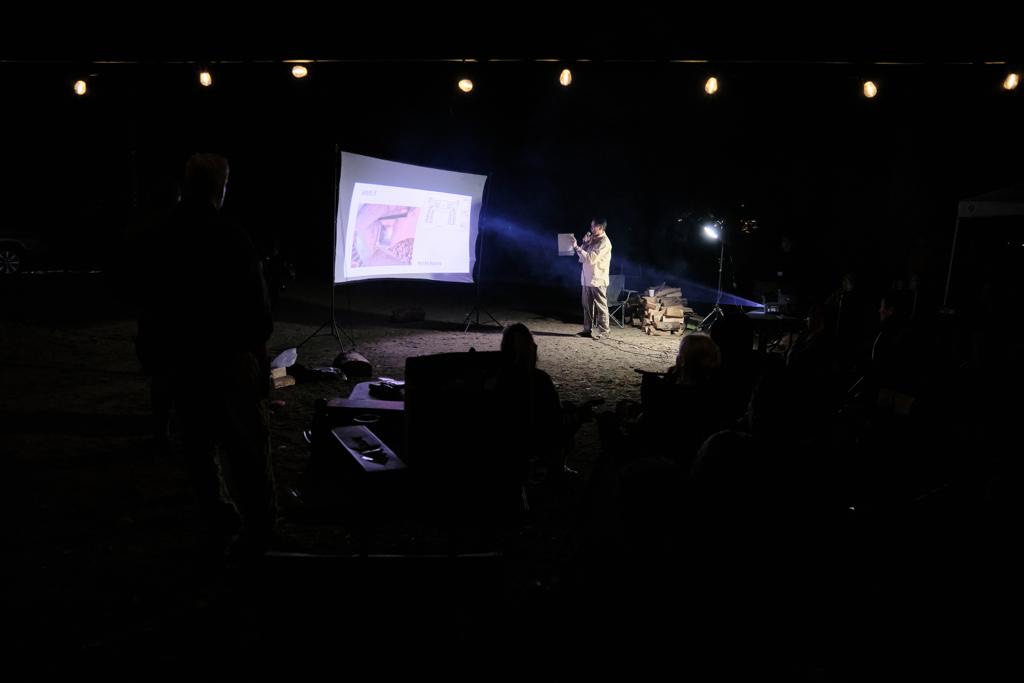
Story #2: YETI Story (true story)
In 1954 H.H. Dalai Lama XIV and all the Tibetan leaders had to go to China to meet with Mao. H.H. Jigdal Dagchen Sakya and H.E. Dagmo Kusho were in Kham with H.E. Dzongsar Khyentse Chokyi Lodro Rinpoche at the time.
H.H. Dagchen Rinpoche got a telegram from H.H. Dalai Lama’s government. They had to go to China.
Rinpoche was giving a big teaching at the time and so he was very upset. There were so many thousands of monks at the teaching. Rinpoche had to leave for China with 200 people.
H.E. Dagmo Kusho and Dungsey Minzu Rinpoche (1.5 years old) stayed with Khyentse Rinpoche. May lamas and monks were left at the monastery since the teaching stopped. Khyentse Rinpoche tried to entertain everyone with camping trips and picnics.
One time they went to the top of the mountain plateau. There were many lamas and dozens of tents. In the morning there was puja followed by games and evening puja.
One night on this side of the valley and the other side of the river there was lots of forest. One night it was very noisy. Rocks were rolling down the hillside. Trees were breaking and then there was this high noise. Like crying. They couldn’t see anything at all. Everyone was scared.
The next day Khyentse Rinpoche told the monks to go over the other side of the river to see. They had to walk way far upstream before they could even cross the river. When they got to the place across the river from camp, they saw a big tree trunks broken and huge rocks piled up. They saw a big footprint like three times the size of a human.
Khyentse Rinpoche said its a sign. Its a Yeti. In Tibetan it is called “Mi’Ge” (mee-gey). Tibetans believe MiGe are protectors – in the same way Snow Lions with green manes are protectors. Since a MiGe had made itself known, the lamas said that it is a sign and something needs to be done.
Two days later messenger monks came from Derge. They said the Derge King’s horses were missing. Two mules were found on top of trees, hanging there. The lamas said it was a bad sign.
When Khyentse Rinpoche, Dagmo Kusho and Minzu Rinpoche, all of the lamas and camping party arrived back at Dzongsar Monastery after the camping trip, H.H. Dalai Lama, and H.H. Jigdral Dagchen Sakya Rinpoche came back. The Tibetan protectors, the Himalayan protector, Yeti had conveyed the message of unfortunate tidings in Beijing for Tibet and Tibetans, at the camping trip simultaneously as negotiations in Beijing ended.
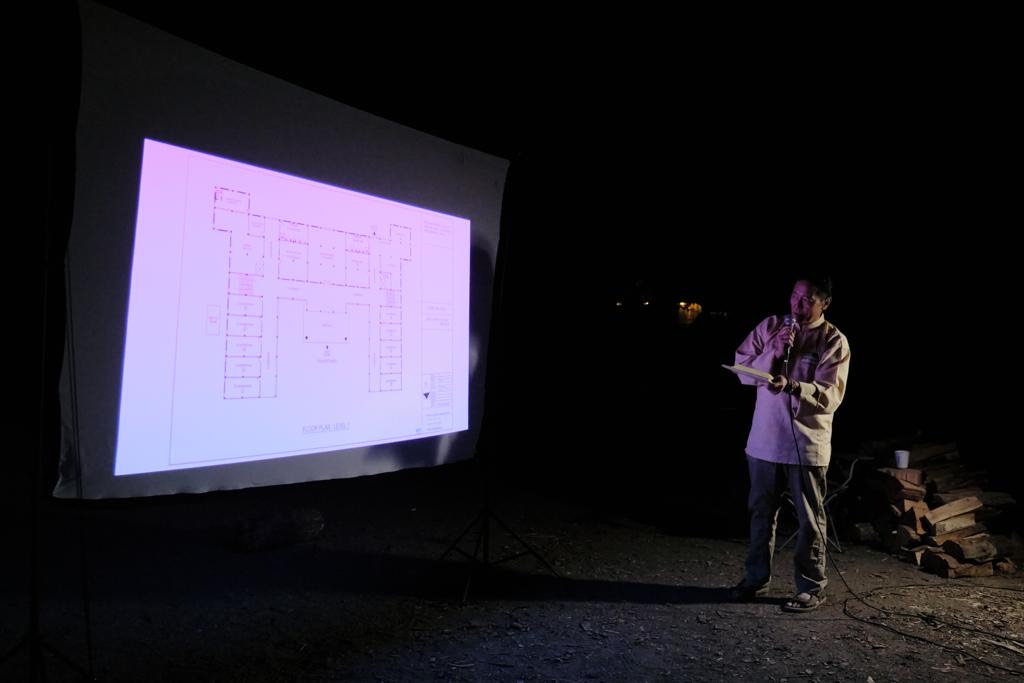
Jaigaon updates and photos
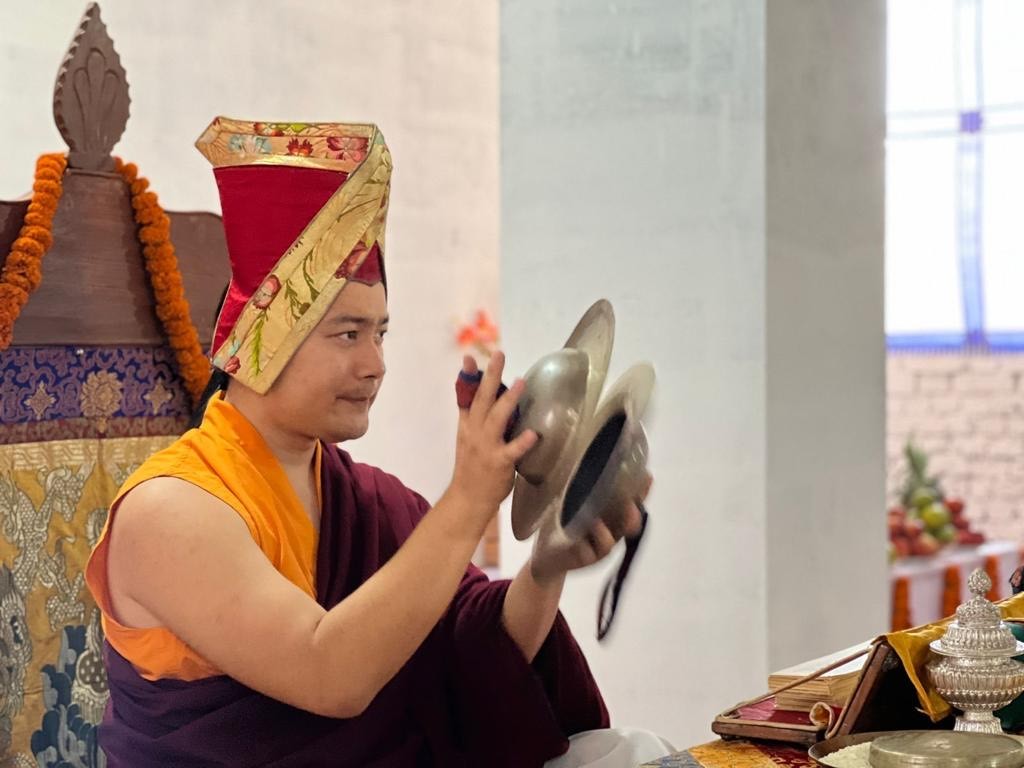
In Jaigaon this past month, His Eminence Khöndung Avikrita Vajra Sakya Rinpoche began by meeting with staff and consultants working to complete the monastery, Sakya Thegchen Phuntsok Ling. Rinpoche then performed a week of pujas of the Khon lineage for the clearing of obstacles and welfare of sponsors and all sentient beings; namely, the Vajrakila Drubchoe and the Jangter Thugdrub Guru Dorje Dragpo Tsal Puja. The full Kunrig Puja (Sarvavidya Mahavairocana) for the welfare of the deceased is also being performed.
Trees Planted at Buddha Ashram
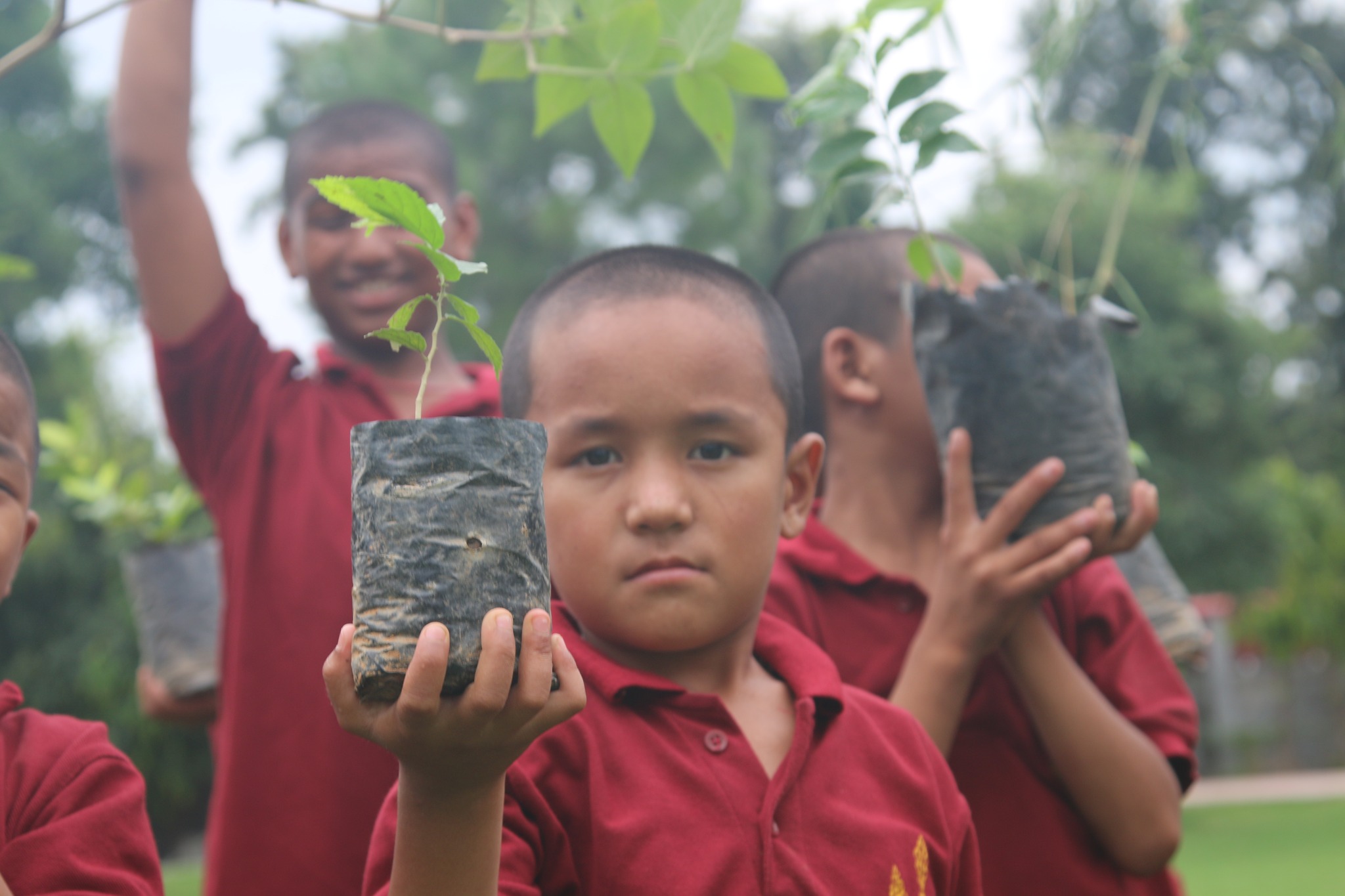
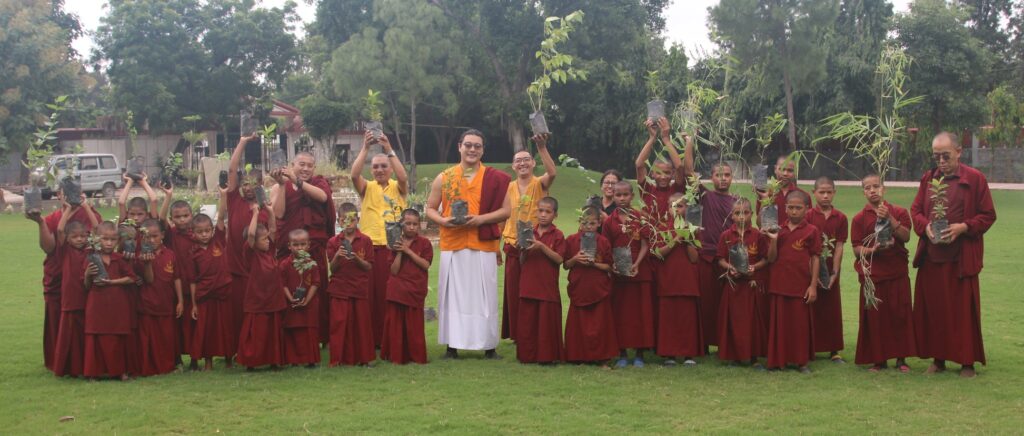
Today we feel privileged as we planted 300 saplings at Buddha Ashram Sakya H.S. with the heartfelt presence of H.E Avikrita Vajra Sakya Rinpoche. And we pray and hope that these saplings will outgrow and live for eternity. And also we hope that our young monks can look at these saplings in the future and feel proud and sense of warm feeling when they look at them and take good care of them too. And with this, we want to bring light to the importance of trees in our world, especially these days when the environment is affected negatively all over the world. With this small act of planting trees, we hope that it will inspire many people to do the same too. Let’s join hands in saving our mother nature.
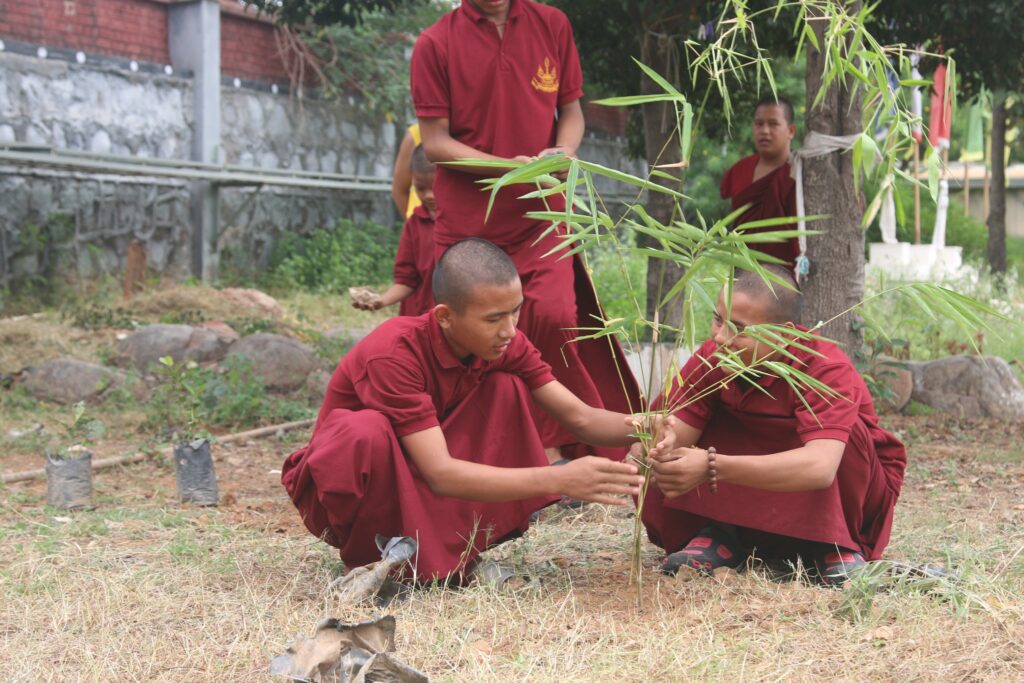
From The Archives: Brief Dharma Lecture 2006
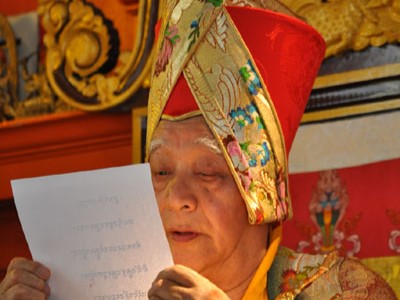
Brief Dharma Lecture by H.H. Jigdal Dagchen Dorje Chang
March 19, 2006
Triple Gem, Two Truths, and the Heart Sutra
Translator: Dr. Jeffery Schoening
Transcribed by Ogyen Choezom
We gather here at the Monastery in order to practice wholesome activities. Also, to better understand what are unwholesome activities. The topic for today is the object of refuge, and the objects of refuge in Buddhism are the Three Jewels, that is, the Buddha, the Dharma, and the Sangha.
We gather here to do the Praises of the Buddha, and on page 15, we have a three-fold practice that we do as followers of Lord Buddha. This is a practice that we do with the meditative concentration on the Three Doors of Liberation. There’s an ultimate reality and a conventional reality, and with the Three Doors of Liberation, we talk about the object, the cause, and result. These are referring to the conventional reality.
So, in the abbreviated Heart Sutra practice that we have, the opening four lines: “Beyond words, thought, and description, the Prajnaparamita; unborn, unceasing, an essential nature of space.
Experienced by the wisdom of personal realization, Mother of the Buddhasof the three times, to you I pay homage.” This combines all of the teaching of the Heart Sutra within these four lines.
So, then for the first line, “Beyond word, thought, and description, the Prajnaparamita,” there’s this brief explanation that goes as proclaimed in chanting the names of Manjushri, “the one who abandons speaking with words.” That’s the quote from the ones chanting the names of Manjushri; the one who abandons speaking with words. Even if one thinks to state in words the complete subject matter of the Great Mother, Prajnaparamita, there is no verbally describing the true meaning.
With the second line,the “Unborn, unceasing, an essential nature of space,” the commentary says that the nature of the mind is empty from the beginning. The freedom from the eight extremes of the consequentialist middle-way, explained by teaching master Buddhapalita is like space, free of arising, abiding and ceasing. But it is not free from the conventional designations of…
- Empty space giving the opportunity for the journey of planets and stars and etc.
- The result arising from the cause.
- Adopting virtue and abandoning evil deeds.
With the third line, “Experienced by the wisdom of personal realization,” the commentary says that the special wisdom taught in the Prajnaparamita text is the experience of only the wisdom that realizes emptiness born in the mindstream of the yogis who adventured on the Mahayana path. But it is not realized by the individuals who venture onto the paths of Hearers or Solitary Buddhas. According to the explanations of the great Prajnaparamita treatises, here the text is the Prajnparamita, the path is the Prajnparamita, the result is the Prajnaparamita, and the essential meaning is the Prajnaparamita. Dividing into four is the system of commenting, explaining, and interpreting; and I hope you all know Prajnaparamita means “perfection of wisdom” or “perfection of discriminating insight.”
Finally, the fourth line: “Mother of the Buddhas of the Three Times, to you I pay homage.” The commentary is that all the Buddhas of the Three Times, having relied on the Great Mother––the Prajnaparamita––were enlightened. So, to this Prajnaparamita, who is like a mother to all the Buddhas, I pay homage. And that completes our commentary on these four lines.
We do this abbreviated Heart Sutra practice here at the Monastery now, not the longer version. And as a part of this short, abbreviated practice, we do this repulsion of obstacles. When we do that, that part of the practice, we clap our hands, “Repel, vanish, eliminated, utterly eliminated…” This is to repel all obstacles. Obstacles that are inner, outer, secret and so on. And, all of these obstacles we repel. This is part of the Prajnaparamita practice.
For most of the obstacles, it has to do with our thinking, our conceptualizations. What goes with our conceptualizations, such as doubts about what is wholesome, what is not wholesome; and all these sorts of problems that we have, that arises from our conceptualizations. This is an obstacle too. This practice helps to eliminate these sorts of obstacles.
Link to audio recording: https://www.sakya.org/2009/12/chenrezi-teaching-3-19-2006/
From The Archives: Lecture on the Heart Sutra
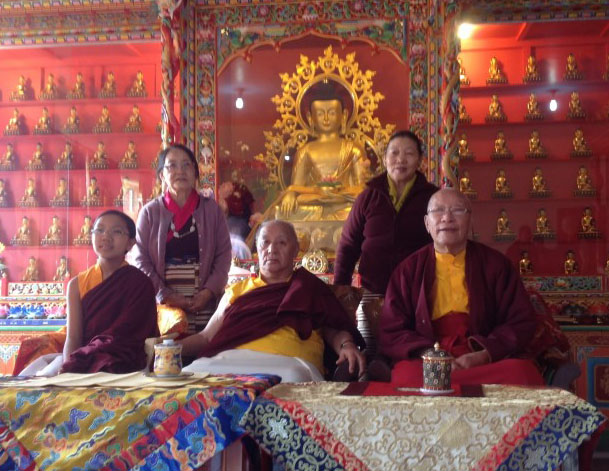
Brief Dharma Lecture by H.H. Dagchen Sakya Rinpoche Dorje Chang
February 19, 2006
Teaching on the (Brief) Heart Sutra Teaching
Translator: Dr. Jeffrey Schoening
Transcribed by Ogyen Choezom
So today, Rinpoche is going to give a brief teaching. And it’s going to focus especially on the teaching of the Heart Sutra. The essential teaching of the Prajnaparamita, the Perfection of Discriminating Insight.
So, there’s the people who take refuge, and then the objects, in whom refuge is taken. The objects in whom refuge is taken are the Buddha, the Dharma, and the Sangha. And the ones taking refuge are we, the individuals. So, for us, as individuals taking refuge, it is important we have faith.
And there are 3 levels of faith. There’s a simple and pure faith. There’s an aspiring faith. And there’s a faith of conviction. So, this faith of conviction, the highest level of faith is one that keeps in mind always taking refuge in the Three Jewels. It always has this in mind, and it does this in this life, and in the future lives as well.
So, the Heart Sutra can have an extended and a brief version. And what we have here in the brief version, are these 4 lines at the top of this page that [are] abbreviated “Heart Sutra.”So, this was composed by lamas of the old. Rinpoche has the oral transmission for this teaching, and as I understand, he is going to give us the oral transmission for this teaching.In addition, he will also give an explanation to the words in this 4-line verse. So, thinking with the mind and the joyful and happy disposition that one aspires to understand the meaning of the Heart Sutra now listen to the verse that Rinpoche will now read.
This comes from the treatises on Perfection of Wisdom or the Perfection of Discriminating Insight. And Rinpoche has now given us the oral transmission. And, in order to understand these teachings, it’s very important that we study the text. It’s very hard to gather any understanding of the material without having done some studying.
What we do now, having heard this oral transmission from Rinpoche we [now] do have this in our minds and in our hearts. So, Rinpoche has now given us a brief commentary to these first 4 verses. And, these contain the complete essential teaching of the Heart Sutra. They can be difficult to understand and [require] lots of study, and it’s good to ask questions of this, to study, and address those questions.
Now, I will go over what Rinpoche just said.
So, the first line: “Beyond word, thought, and description, the Prajnaparamita”
The commentary is “As proclaimed in the text, the sutra, the Manjushri Namasamgiti…The one who abandoned speaking with words. So, even if one thinks to state in words, the complete subject matter of the Great Mother, Prajnaparamita, there is no verbally stating the true meaning.
So that’s what the first line means.
The second line: “Unborn, unceasing, an essential nature of space.” The commentator says this: The nature of the mind is empty from the beginning: the freedom from the eight extremes of the consequentialist middle way… Explained by [the] teaching master, Buddha Palita, this freedom is like space, free of arising, abiding, and ceasing. But it is not free from the conventional designation of one: empty space…Giving the opportunity for the journey of planets and stars, etc. Or two: a result arising from the cause. Or three: adopting virtue and abounding evil deeds.
Move to the third line. “Experienced by the wisdom of personal realization.” The special wisdom taught in the Prajnaparamita text…Is the experience of only the wisdom that realizes emptiness…Born in the mind stream of the yogis who have entered the Mahayana path. But it is not realized by the individuals who went to the path of the hearers or solitary Buddhas. According to the explanation of the great Prajnaparamita text or treatises, here, the text is the Prajnaparamita. The path is the Prajnaparamita. The result is the Prajnaparamita. And the essential meaning is the Prajnaparamita. Dividing into 4, is the system of commenting, explaining, and interpreting.
And finally, the fourth line. “Mother of the Buddhas of the Three Times, to you I pay homage.” All the Buddhas of the three times having relied on the great mother, Pragya Paramita were enlightened. To this Prajnaparamita, who is like a mother to all the Buddhas, I pay homage.
That completes the commentary.
So, there are many commentaries written on the Heart Sutra, the essence of the Prajnaparamita. And these have been written by lamas, Indian saints, and Tibetan lamas. These are available, there are translations in English. It is important to study these in order to better understand the meaning of the Prajnaparamita, the perfection of discriminating insight.
It’s very important to do the prayers. [Because] if we do the prayers, we will have the blessings enter us. And there’s a story in Tibet about a woman who did the practice for the White Parasol Goddess. She would recite the mantra––she had great faith and would recite the mantra. This is also about the importance of faith. She would recite the mantra for the White Parasol Goddess, with her great faith. The parasol would appear over her. She had this sort of attainment; she had this sign of blessing from the White Parasol Goddess. But she said the mantra wrong. When she recited the mantra, it wasn’t well done. And so a lama heard her one day reciting the manta. He just heard this really broken mantra being recited. And so, he talked to the woman about [how]
“You’re saying this all wrong. You have to say it like this. This is the correct way to say the mantra.”
And so she then learned, in addition to great faith, the correct way to read the mantra.
However, she stopped having the umbrella, and the parasol disappeared. She was so caught up in saying the mantra correctly that her faith had been disturbed because of this. So the lama had to talk to her about, “Okay, look, I told you the correct way to say it. But, it messed you up. You know, you’re not getting the blessing of the Parasol Goddess at the same rate you had been getting it before. There’s been no appearance of this parasol above you. So, just go back to saying it the way you did say it.” And, so she did. And with this her faith was renewed or restored. And again, the parasol appeared.
So this just shows, it’s not so much what we just say, but it is [the] importance of the faith, the power of the faith that brings the blessings, that brings the understanding, that brings the realization. So, faith is very important.
It’s important to study this, and then gradually, the understanding will come. It takes time, it takes effort, and gradually, you’ll get the results.
Now for the practice of the Heart Sutra, the abbreviated Heart Sutra, we will recite the four lines beyond word, thought, and description. We will have our hands in the prayer position, and then, when we recite the mantra, Teyatha Om Gate Gate Paragate Parasamgate Bodhi Soha, then we have our palms facing up. And we can just hold them down in our laps with our palms facing up. And we can recite this 3 or 7 times or as much as we’d like. Then, when we recite the homage, after the mantra we put our hands back in the prayer position, with homage to the lama, homage to the Buddha, and so forth.
On the next page, we are averting or repelling obstacles, various sorts of unfavorable factors. We are trying to settle our minds, to get rid of disturbing, discursive thoughts. And so…in order to do that, or as in part of doing that, when we say in the words, “repel, vanish”––and these are underlined in the text…So when we say, “repel, vanish, eliminated, utterly eliminated,” we clap our hands.
So we go…“repel *clap* immediately all the unfavorable factors to be abandoned through practicing our holy Dharma. May they vanish, *clap* may they be eliminated, *clap*, may they be utterly eliminated, *clap*.”
When we’re clapping…when we are clapping our hands, we are repelling all obstacles, obstacles, outer, inner, secret. All these different types of obstacles we are repelling. And also, we are, as it says in one of the prayers we do to Padmasambhava, we pray to him to avert all obstacles. And also to bestow all the things we wish for. All the aspirations; make them come real immediately. So, both of these are happening at the same time. That our wishes are being fulfilled, and that all obstacles be repelled.
Link to audio recording: https://www.sakya.org/2012/03/heart-sutra-teaching-2-19-2006/
From The Archives – Dharma Lecture Feb 2006
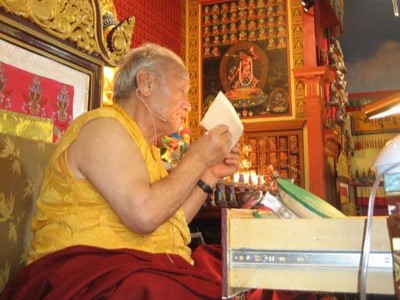
Brief Dharma Lecture by H.H. Dagchen Sakya Rinpoche Dorje Chang
February 12, 2006
Motivation for Practice
Translator: Dr. Jeffrey Schoening
Transcribed by Ogyen Choezom
We gather here at the Monastery in order to do wholesome activities, and also to put aside unwholesome activities. And to better understand the two. And we come here to practice the Dharma, the Buddha’s teaching.
Dharma can refer to Buddha’s teaching but can also just refer to worldly activities. There’s worldly activities, and then there’s the teachings of the Buddha. And these can both be referred to as Dharma.
So, at the beginning of the practice of Dharma, motivation is very important.
In our text, we have the phrase… “Homage to you who perceiving that the activities of samsara are insubstantial”.
And this is the important recognition that then informs our motivation, that enables us to do our practice. So, this is our starting point.
And then, as Buddhists, we take refuge. And there are three objects in which we take refuge. We take refuge in the Buddha, the Dharma, and the Sangha. And so these are the Three Jewels or the Triple Gem. And we are the ones, as individuals, who take refuge.
As Rinpoche said, samsara has no essence, and this teaching could be also understood through the teaching of the three types of endlessnesses. Such as, there is no end to activities, there is no end to desires, and there is no end to birth and death. So, contemplating these helps us better understand how samsara has no essence.
And so, recognizing the nature of samsara, we take refuge in the Buddha, Dharma, and Sangha. And by taking refuge, we can receive their blessing, the blessing of the Triple Gem. And this helps us on our path to understanding.
So, we read and recited the Praise of the 12 Exemplary Deeds of the Lord Buddha. We did it first in Tibetan, and then in English. So, we have a sense of the life of Buddha. And to better understand the Buddha, then it’s important to better understand his qualities. And to help us with this, there are the 10 powers of a Buddha.
So, these are in the Ocean of Compassion book, on page 45, they have a listing of these 10 spiritual powers of a Tathagata, that is a Buddha. As defined by the great Sakya Pandita, in his text, Elucidating the Intentions of the Sage, these 10 abilities are:
- Knowing what is possible and impossible.
- Knowing the karmic results of actions.
- Knowing the nature of various elements of existence.
- Knowing the various dispositions of living beings.
- Knowing the higher and lower faculties of living beings.
- Knowing the application of the path in every situation.
- Knowing the condition of all states, such as concentration, liberation, meditation, defilement, and purity.
- Knowing previous lives.
- Knowing through divine vision, death, transference, and birth.
- Knowing when the defilements are exhausted.
Link to audio recording: https://www.sakya.org/2009/12/chenrezi-teaching-2-12-2006/
From the Archives – Dharma Lecture 2006
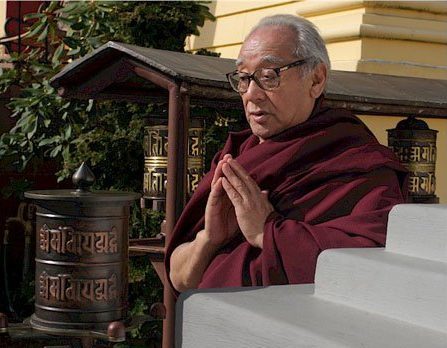
Brief Dharma Lecture by H.H. Jigdal Dagchen Dorje Chang
January 15, 2006
Refuge and Chenrezi
Translator: Dr. Jeffrey Schoening
Transcribed by Ogyen Choezom
So, Adrienne has explained already the practice we do here at the Monastery briefly. And Rinpoche will give more explanation now about what is being done.
So, we come to the Monastery to do wholesome practices. But also, to understand what our unwholesome practice is, what’s non virtuous. And our focus needs to be on our motivation. This is really the basis––what is our motivation?
Some of you have been coming here [the Monastery] for a long time. And some of you are new here. Those of you who have been coming here for a long time are familiar with the practices we do here. For those of you who are new here at the Monastery, you are not familiar with these practices, and they can be difficult to understand. So, Rinpoche is going to briefly go over the practices to help you with understanding them.
The basis of all phenomena is our mind. So, when we do the practice, it’s very important that we have an understanding of our minds. So, this is very important. The mind is where the practice is done.
So, to begin, we take refuge here at the Monastery. With the objects of refuge. We are the ones who take refuge. There is both of these; there are the objects in which we take refuge, and the individuals who are taking refuge.
So, the three objects of refuge are the Buddha, the Dharma, and the Sangha. The Dharma that we practice here is both of the sutra and the tantra classes. In the sutra class, there are three objects of refuge, as mentioned… the Buddha, the Dharma, and the Sangha. But in the tantra tradition, there is a fourth object of refuge.
So, the practice we just did or the recitation we just did, the praises of the Buddha, this is in the sutra tradition. In the tantra tradition, our practice is where we meditate on a meditational deity, a Yidam. So, in that tradition is the Chenrezi practice. Chenrezi is a meditational deity.
When we do the practice, it is important to understand the meaning of what we’re doing. Therefore, we use our consciousness for this, our minds. In that connection, we do a practice that involves the Three Doors of Liberation. The Three Doors of Liberation are done in the context of an object or basis, a cause, and a result.
At the bottom of page 16, there’s the mantra, TAYATHA OM MUNI MUNI MAHA MUNI SHAKYA MUNIYE SOHA. And this is a mantra that combines both of the sutra and the tantra. Or the significance of sutra and tantra. And this is a mantra we will repeat 11 times.
Link to audio recording: https://www.sakya.org/2009/12/chenrezi-teaching-1-15-2006/
From The Archives – Dharma Lecture 2004
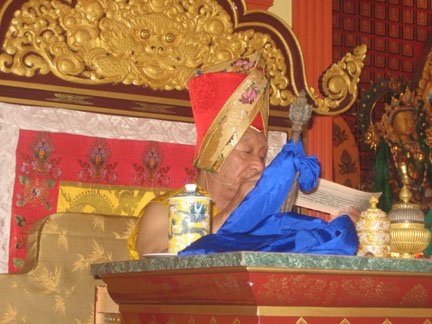
Brief Dharma Lecture by H.H. Jigdal Dagchen Dorje Chang
January 12, 2004
Chenrezi Meditation and the Nature of Mind
Translator: Dr. Jeffrey Schoening
Transcribed by Ogyen Choezom
Now, we’ve come to the practice of Chenrezi. This is a practice we do in order to cultivate the qualities of loving kindness and compassion. And loving kindness is included among the four measurable attitudes: namely loving kindness, compassion, sympathetic joy and equanimity or impartiality.
So, we can understand it (loving kindness) through studying the four immeasurable attitudes. Compassion, likewise, is there, and it is often described as having three levels:
- There’s compassion for the suffering of beings.
- Compassion for their qualities such as being impermanent.
- And an ultimate level of compassion which has no object or does not objectify.
So, we do this meditation of Chenrezi in order to develop these qualities. We do this through meditating on Chenrezi’s body, speech, and mind.
We meditate on his body; we visualize ourselves as having his body or form. And through doing this, we cultivate these qualities of loving kindness, and compassion. And we receive his blessing. As we direct our loving kindness and compassion towards all beings, wishing that they be free of suffering, and they be established in happiness. In this way, we cultivate these qualities when we meditate upon his body.
We meditate upon his voice, then we think that within our hearts that there’s the seed syllable HRIH, surrounded by the mantra. And we send out light rays to all the beings in the six realms. Again, with the wish that they be free of suffering and established in happiness.
When we meditate on his mind, on the mind of Chenrezi, we recognize that our own bodies and minds are interconnected. That’s just the way that they are. And when we try to understand the nature of our bodies and minds then we can try to do this through just observing how phenomena arise, abide, and cease.
And especially we can do this by observing our thoughts – just how our thoughts will arise, last for a moment, cease, then another thought arises. And in this way we can better understand the nature of our own minds.
Link to audio recording: https://www.sakya.org/2009/12/chenrezi-teaching-1-12-2004/
Jaigaon Construction Update
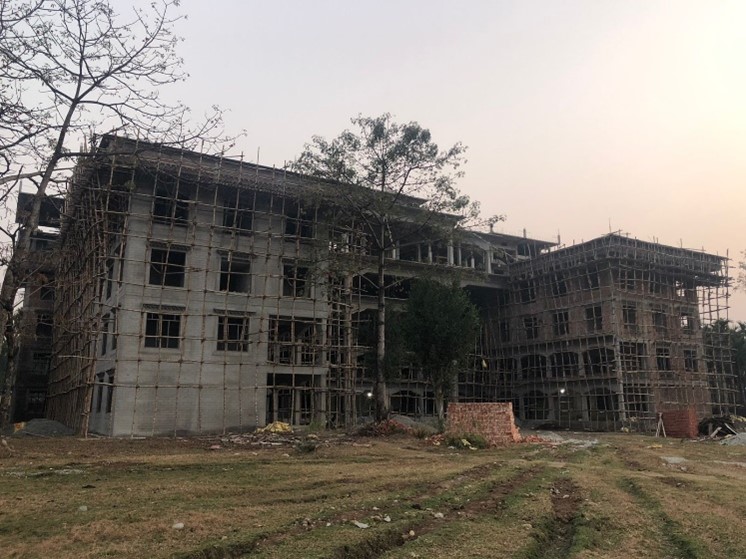

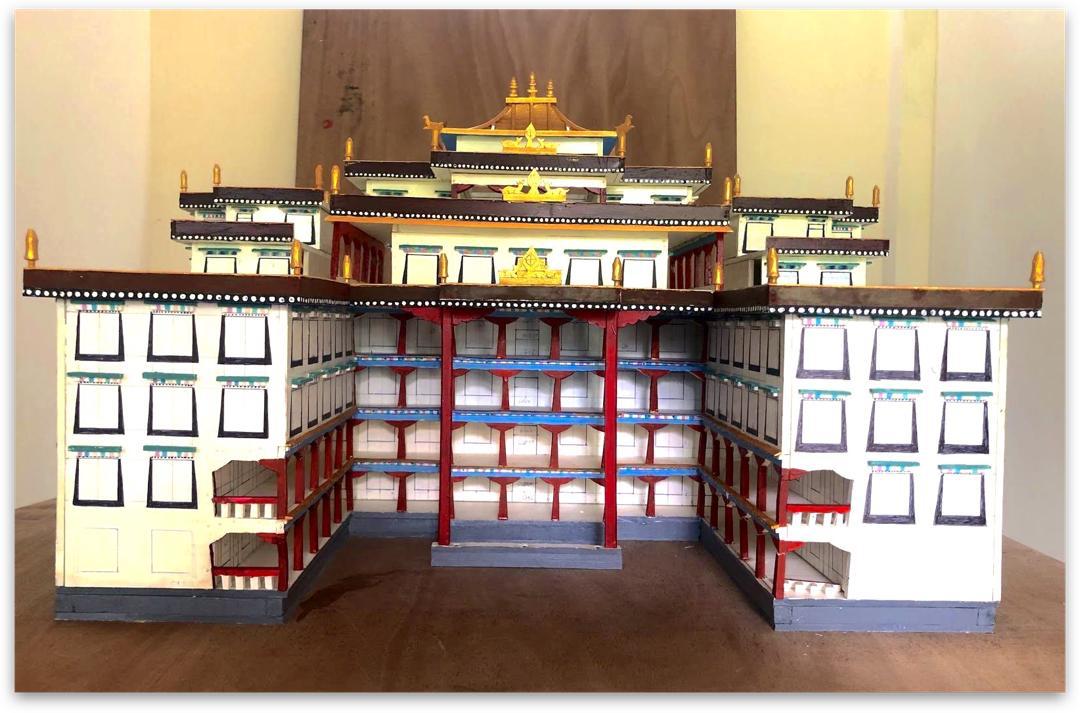
Great progress is being made! Sakya Thegchen Phuntsok Ling, which means “the Sanctuary for the Mahayana Teachings of Sakya to be Abundant” in Tibetan, will follow the curriculum of teachings established by the Khön dynasty in Sakya’s headquarters in Tibet, Lhakhang Chenmo.
The main building, with 11600 m2 building area, is a 5 floored comprehensive structure with shrine halls, classrooms, library, auditoriums, dormitory, dining hall, etc. Please click an image to view full size.
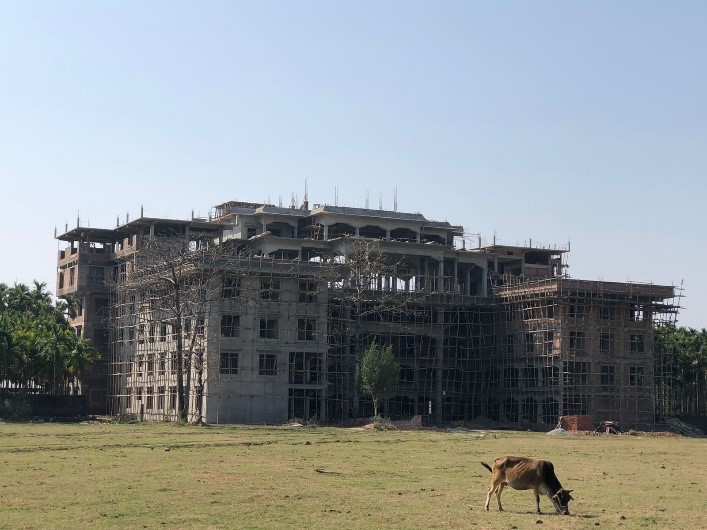
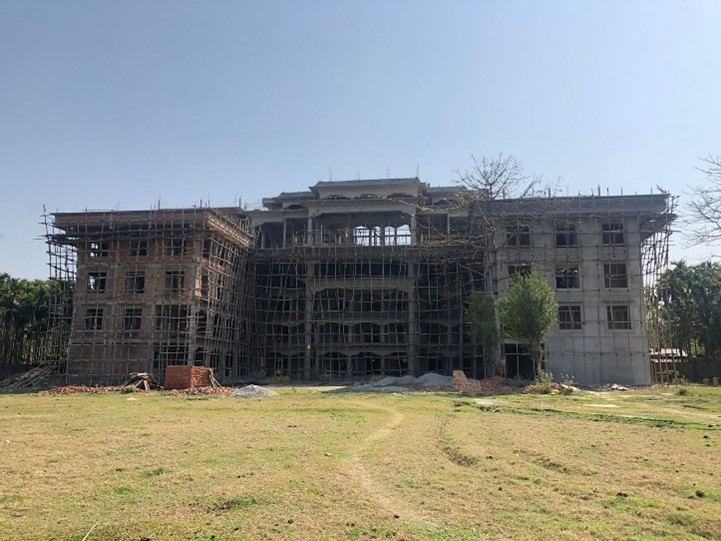
His Holiness the 42nd Sakya Trizin Rinpoche visited Sakya Thegchen Phuntsok Ling at the invitation of Venerable Jamyang Gyaltsen. Also attending were Khenpo Sangay Lodoe from Jaigaon, Kalimpong Khentu, and Khenpo Namgyal.
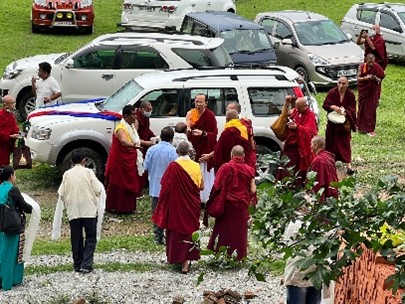
His Holiness the 42nd Sakya Trizin Arrives 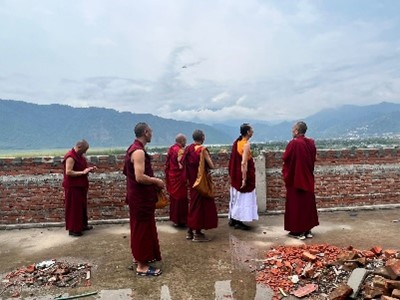
Entourage of His Holiness tours the grounds 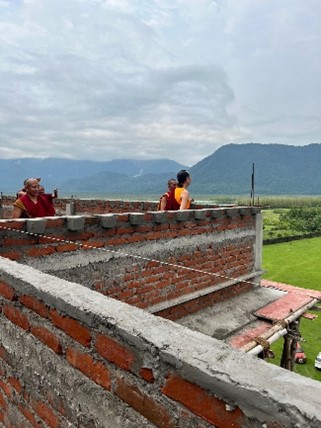
Taking in the view 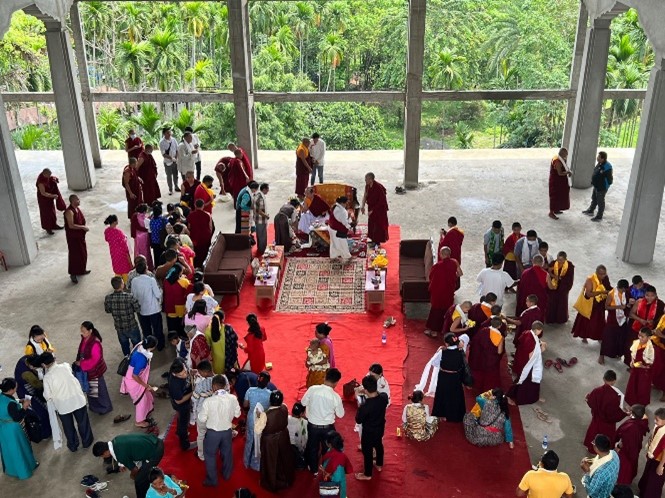
His Holiness bestows Kah-go blessing 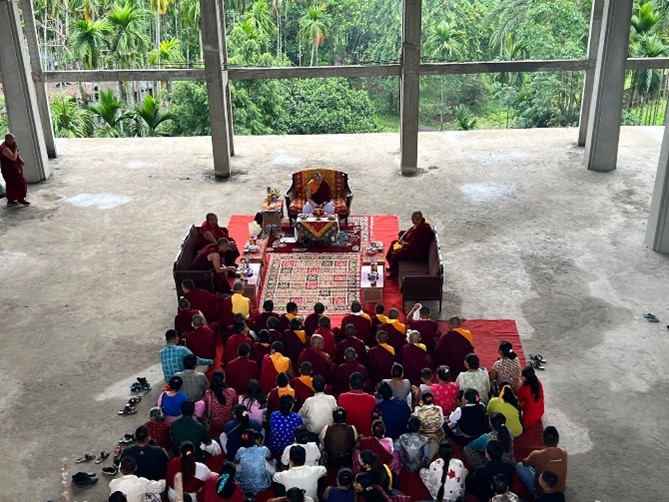
His Holiness bestows Kah-go blessing
During his visit, His Holiness toured the full building and made note of the wonderful grounds. Marking a highlight of his auspicious visit, His Holiness the 42nd Sakya Trizin Rinpoche bestowed Kah-go, the powerful protection blessing, to all those in attendance.
Here are some of the architectural diagrams representing the plan for Sakya Thegchen Phuntsok Ling and the Buddha Bharati School, with a photo of the current construction progression for reference.
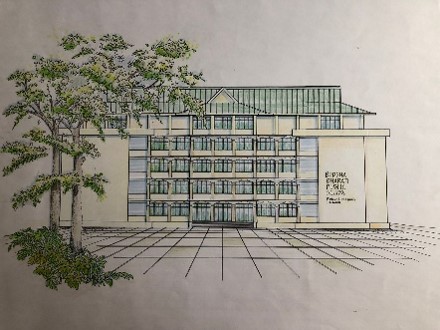
architectural rendering 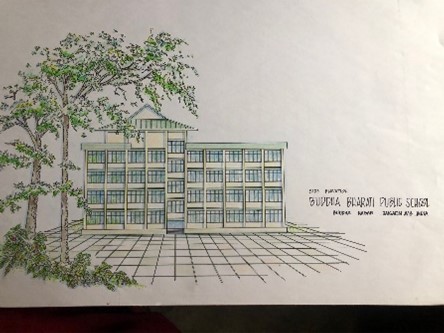
architectural rendering, side 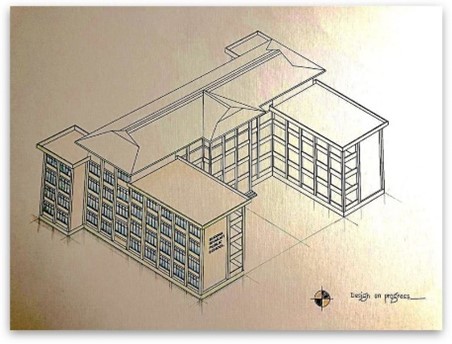
architectural rendering, angle 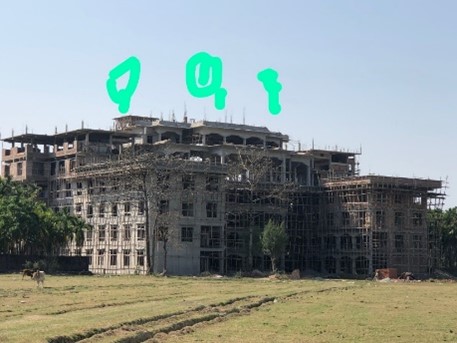
construction status
Below are some architectural renderings of the ground floor floorplan:
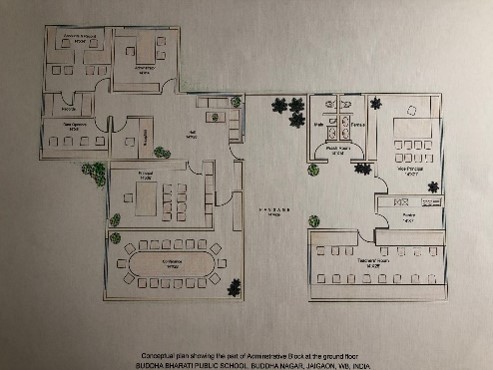
floorplan- wing 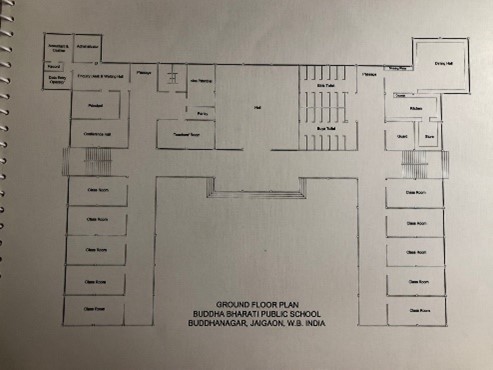
floorplan – ground floor 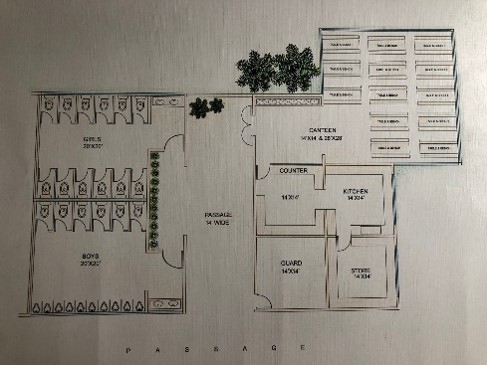
floorplan- wing
For reference, here are the North and South wings under construction in April 2022:
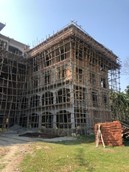
construction – South Wing 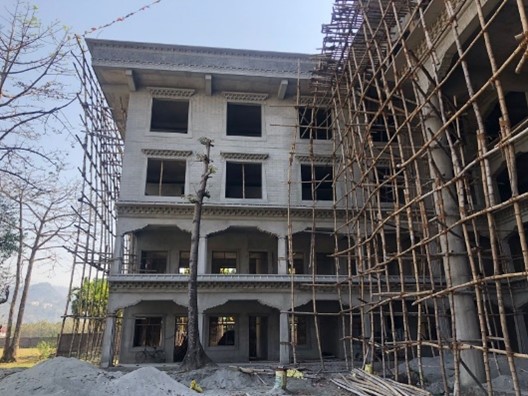
Construction – North Wing
Thanks to the incredible hard work of the construction workers, designers, engineers and site administrators for their dedication and devotion to making the plans of His Holiness Jigdal Dagchen Dorje Chang a reality!
Auction Results
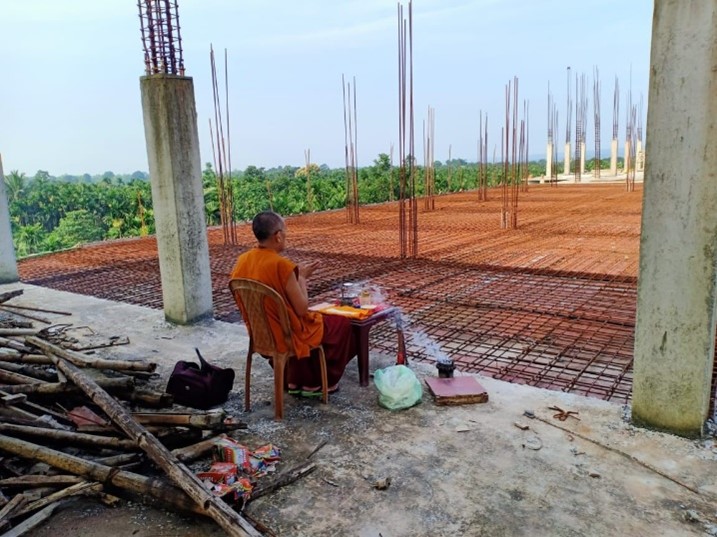
Greetings! We last posted when promoting the Sakya Heritage Society Auction, and we’re delighted to share that it was a great success. We are humbled by the generosity of those that supported this precious endeavor.
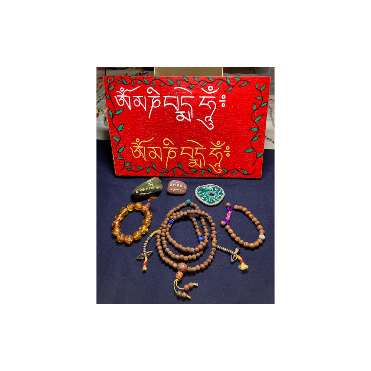
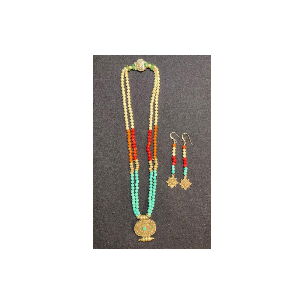
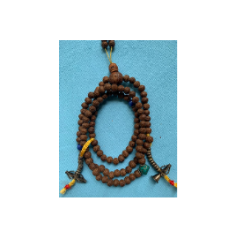
The capital we raise goes directly into the continued construction of Sakya Thegchen Phuntsok Ling in Jaigaon, India. Each worker contributes such valuable effort, and we are grateful to each one. Click an image to view full size.
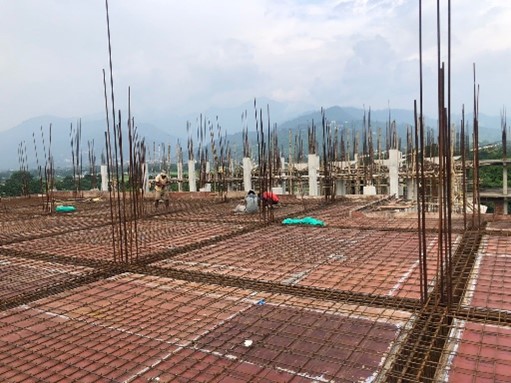
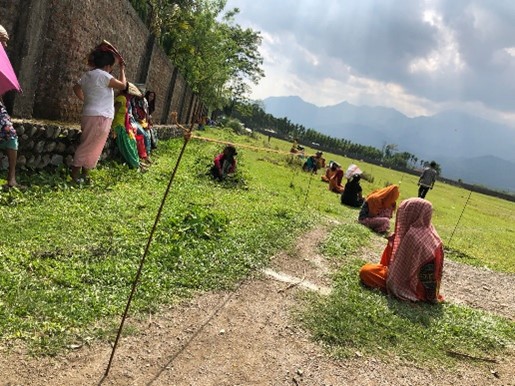
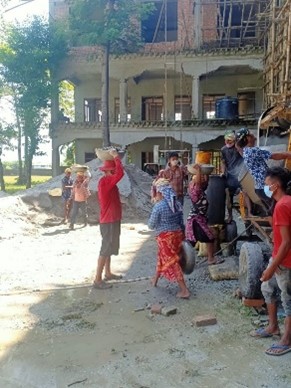
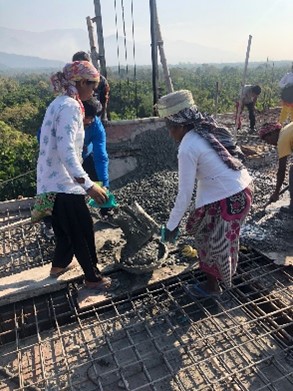
On this auspicious day, Venerable Jamyang Gyaltsen says prayers over the groundwork for the main temple:

It takes an enormous amount of material to build the Sakya Thegchen Phuntsok Ling and Buddha Bharati School. Below is a slideshow of workers skillfully using these materials, building a staircase that is representative of other staircases throughout the building. These go the 3rd floor. Click images to view full size.
More construction progress. Click an image to open full size.
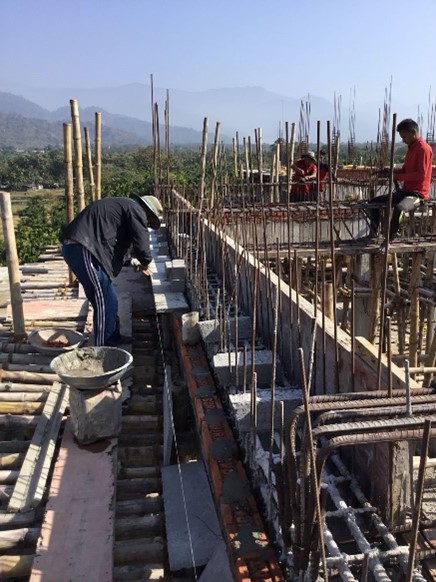
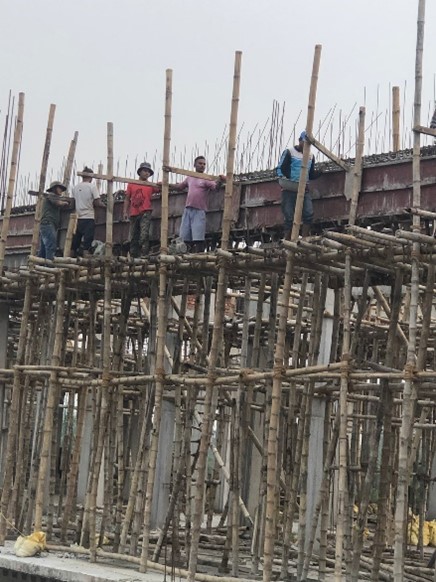
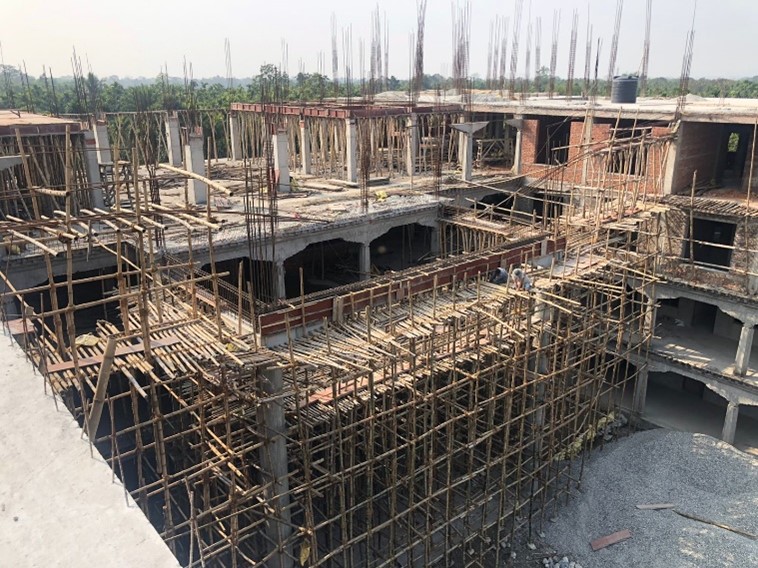
Construction has been ongoing throughout the pandemic. As we share the struggles of this unprecedented period, we also share bounty. The Marici Fellowship partnered with Sakya Heritage Society in Jaigaon to distribute food to local families.
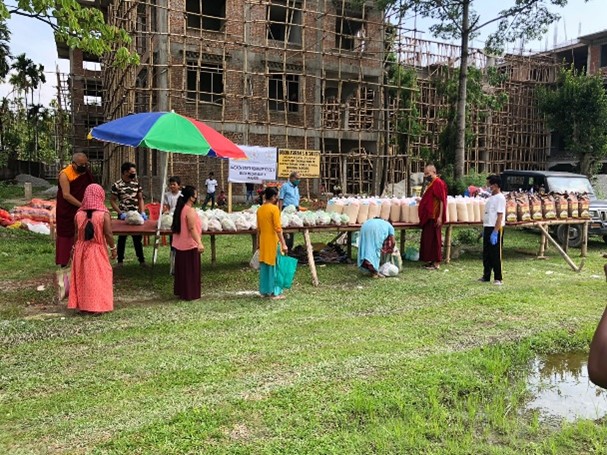
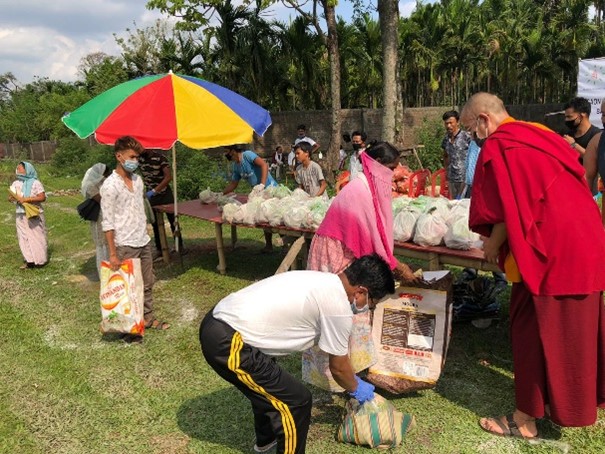
The Marici Fellowship and the Sakya Heritage Society are closely aligned. Sakya Thegchen Phuntsok Ling is the vision of H.H. Jigdal Dorje Chang. Inspired by the compassionate nature of his grandfather, H.H. Jigdal Dagchen Dorje Chang, H.E. Khöndung Avikrita Vajra Sakya Rinpoche founded the Marici Fellowship in 2017, wishing to create the opportunity for Dharma practitioners to engage in compassionate action to benefit all beings.


This view is from the Lama Residences located on the 6th floor. You can see the Bhutanese town of Phuntsokling in the distance. Phuntsokling is Bhutan’s nearest city to Jaigaon. The beautiful Bhutan Gate separates India and Bhutan and is the main overland passage between the two cities.
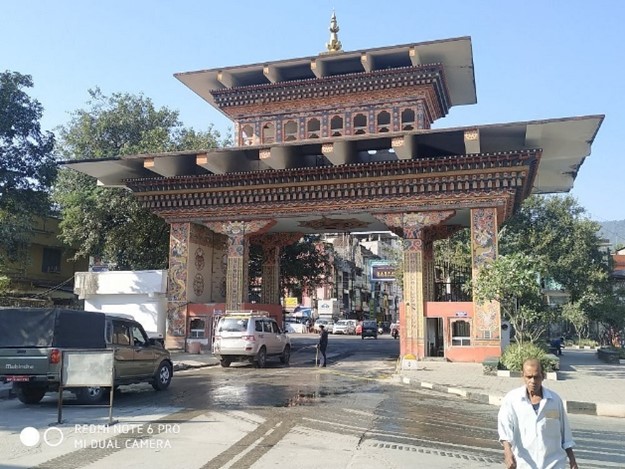
The 1980s: Sakya Monastery
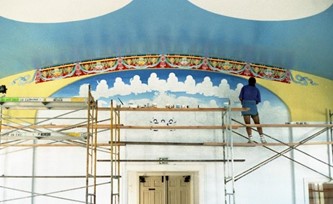
In 1984, Sakya Tegchen Choling had outgrown its three previous homes: the Center in a house on Ward Street, followed by the Center on Burke Street and the Center in the University District. Finally His Holiness Dagchen Sakya’s vision of establishing a seat for the future of the Sakya Khön Lineage in the United States would be realized.
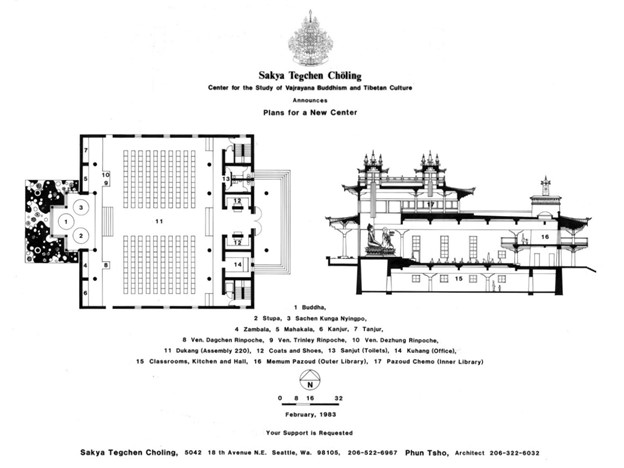
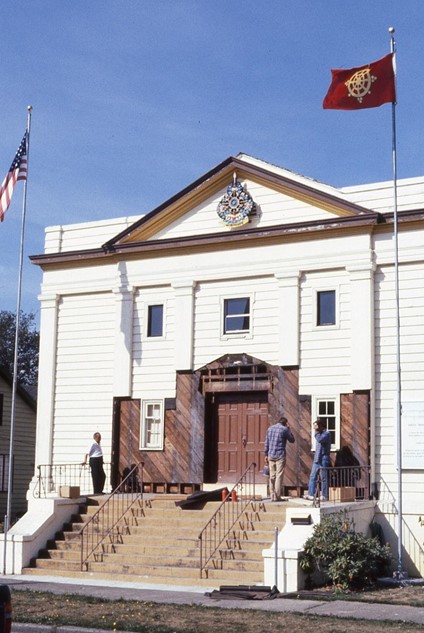
When the Monastery’s building in the Greenwood neighborhood of Seattle was sold to the Sakyas in 1984 it had been a Baptist Church. It was originally erected in 1928 as the First Presbyterian Church. In choosing the former church H.H. Dagchen Rinpoche found that the building was not only spacious enough to accommodate the requisite shrines, thrones, and seating area for practitioners, there were also a number of auspicious coincidences. The building’s entrance faced south and had a flat roof typical of Tibetan monasteries, and the address was “108”, an auspicious number for Tibetan Buddhists.
In 1984 Sakya Tegchen Choling was reorganized under H.H. Dagchen Sakya and became Sakya Monastery of Tibetan Buddhism. It took many years of hard work by dedicated volunteers to transform the building into the traditional Tibetan Monastery that it is today.
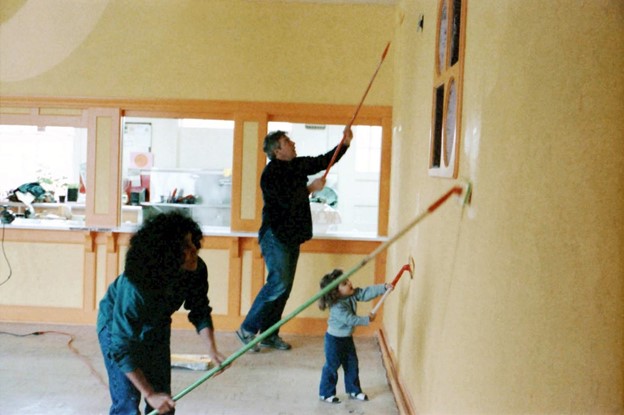
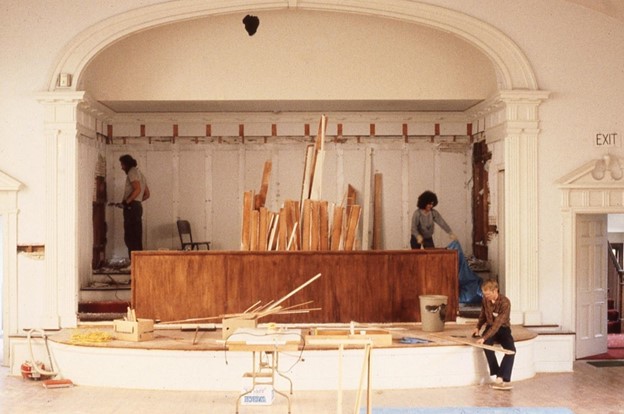
Many of the murals were painted by Tibetan artist Dawa Dhundrup (right), including the 1000-year long lineage of Sakya masters in the Lamdre lineage on the south wall of the Monastery (below).
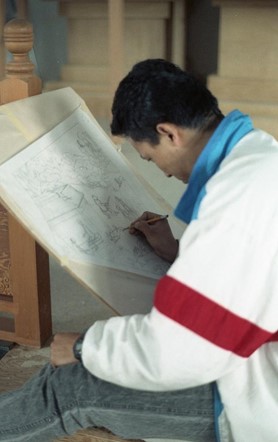

H.H. Dagchen Rinpoche oversaw dozens of devoted students in everything from dismantling the shrine room floor (above), to digging the foundation for the Dezhung Tulku Rinpoche III’s memorial stupa (below).
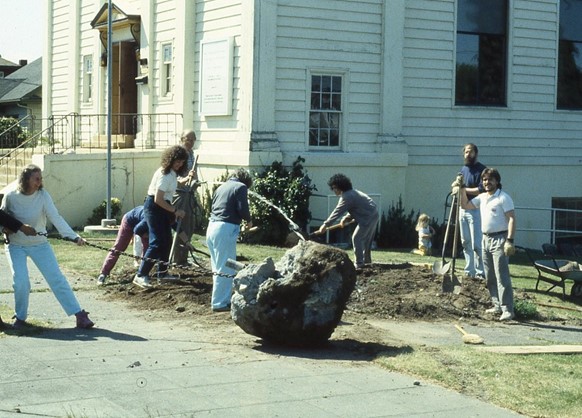
For twelve years while the main shrine room underwent remodeling, the downstairs Cultural Hall was used as an interim location for the Monastery’s religious services. Over the years, the Monastery’s building and contents were consecrated by the highest lamas in Tibetan Buddhism including H.H. Dalai Lama and H.H. Sakya Trizin Rinpoche in order to imbue them with the enlightened spirit of the Buddha.
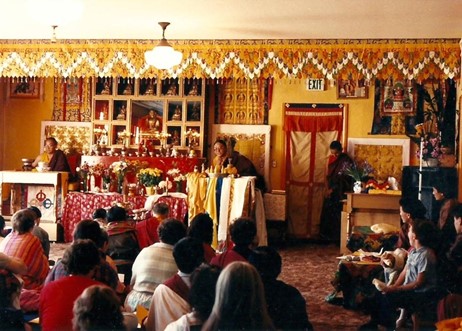
Above: H.H. Sakya Trichen Rinpoche and H.H. Dagchen Rinpoche teaching in the Cultural Hall in 1988.
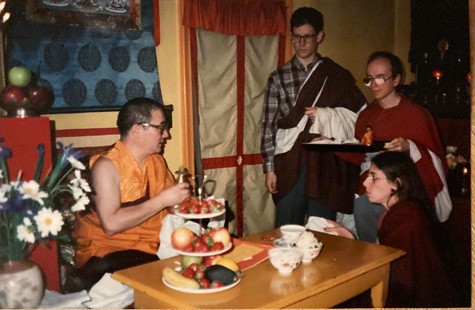
Above: H.H. Trinley Rinpoche giving a long-life blessing in the Cultural Hall in 1987.
Below: H.E. Chogye Trichen Rinpoche visits Sakya Monastery in 1989.
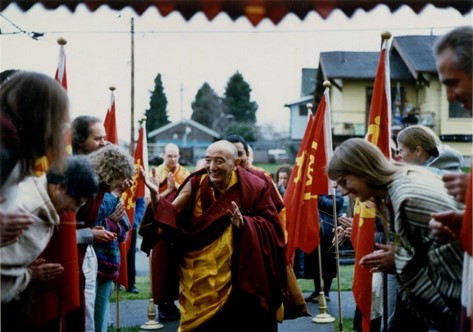
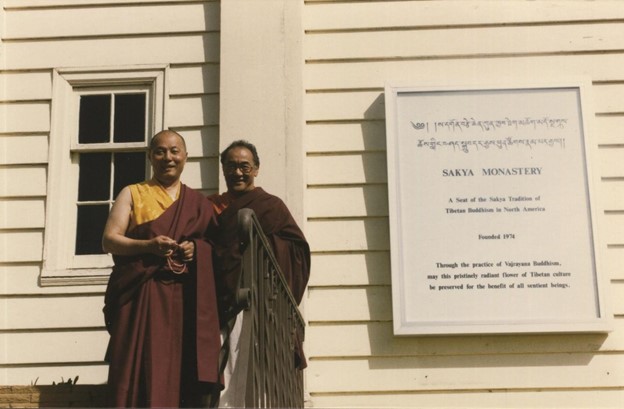
H.H. Dagchen Rinpoche with Lama Kang Tso (longtime Dharma brother of H.H. Dagchen Rinpoche in Tibet) in front of Sakya Monastery in 1984.
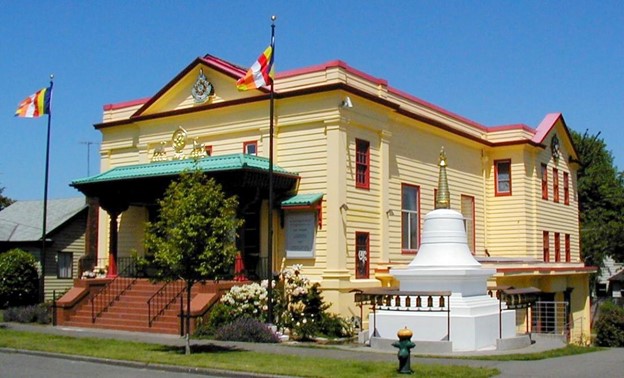
In 2014, after 30 years, Sakya Monastery of Tibetan Buddhism was completed (above).
“There were two purposes in my establishing this Monastery here. The main purpose was, as is clear to all people, due to the political change and climate in Tibet, we had to leave our country and bring our tradition and culture to the West. It was important to preserve that culture and tradition, especially that of the Sakya Khön lineage. Therefore, the two purposes were to preserve the Khön lineage and the Sakya tradition – and thereby preserve the Buddhadharma for future generations.”
- H.H. Jigdal Dagchen Sakya
Construction in Jaigon


Above: H.E. Dagmo Kusho Sakya pointing to land in Jaigaon, India.
The Sakya Heritage Society exists to help realize the vision of H. H. Sakya Dagchen Rinpoche to build an international centre fashioned on Nalanda, the ancient Buddhist centre of higher learning. Situated in Jaigaon, India, Sakya Thegchen Phuntsok Ling will provide the highest quality of spiritual education and community services.

Above: Architectural model of the completed monastery.
The main building, with 11600 m2 building area, is a 5 floored comprehensive structure with shrine halls, classrooms, library, auditoriums, dormitory, dining hall, etc.

Above: On the path to completion. Progression on the construction of the Monastery.

Above: Jaigaon Monastery, March 2021. Venerable Jamyang Gyaltsen, center, with contractor and crew.
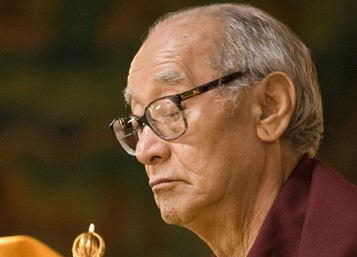
Left: H.H. Jigdal Dagchen Dorje Chang.
Following the passing of H.H. Jigdal Dagchen Dorje Chang in 2016, his family, Sangha and supporters have redoubled efforts to establish the monastery and an adjacent school just as he envisioned.
We’ll be sharing more about the royal family’s journey from Tibet to India, to America, and back to India in our next series of posts.
We are grateful for your company and support.
The 1970s: Sakya Tegchen Choling
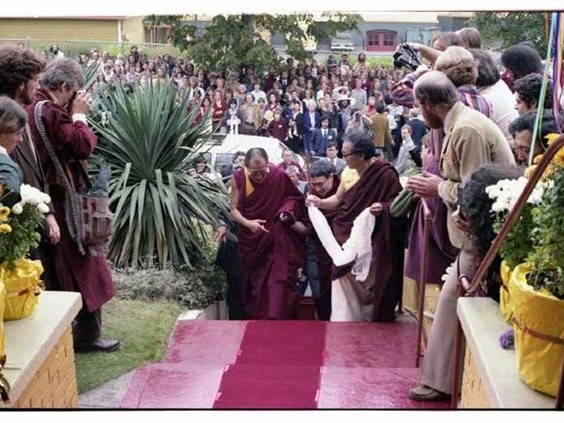
The Early Years in Seattle
In the 1974 H.H. Jigdal Dagchen Dorje Chang founded Sakya Tegchen Choling. The Dharma center moved from its initial location on Ward Street in Capitol Hill where H.H. Dagchen Rinpoche and H.E. Dezhung Rinpoche gave teachings to small groups of students, to the house on Burke Street in Wallingford in 1976.
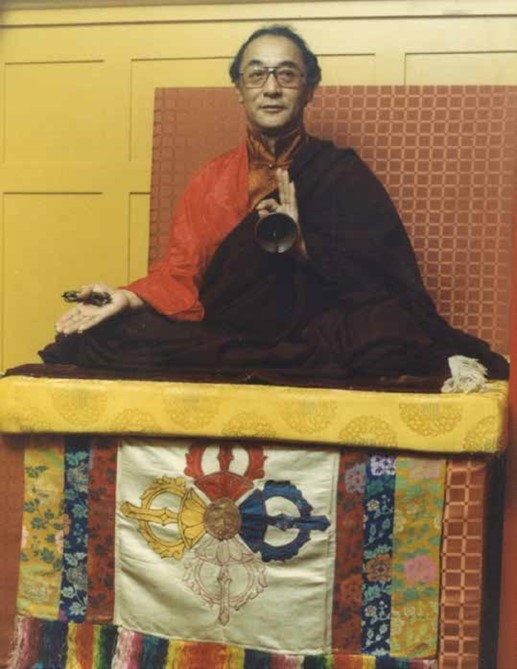
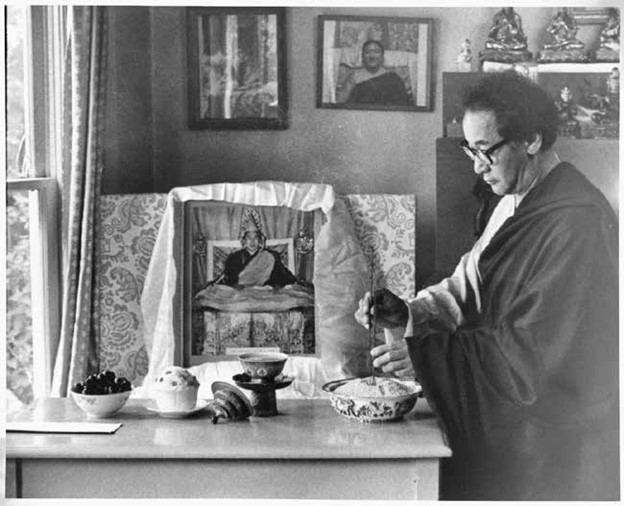
Above: H.H. Jigdal Dagchen Dorje Chang at Burke Street.
Below: H.E. Khöndung Mati Rinpoche, H.H. Jigdal Dachen Dorje Change and H.H. Trinly Rinpoche at the Burke Street center in 1978.
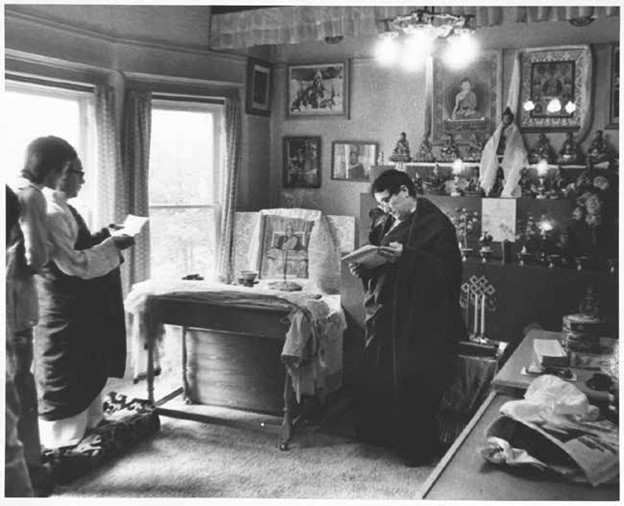
In 1979 H.H. Dalai Lama visited the U.S.A for the first time. He visited Sakya Tegchen Choling on Burke Street. He performed a consecration and gave a Chenrezi teaching. Outside the center 300 people were able to hear the teachings and receive blessings.
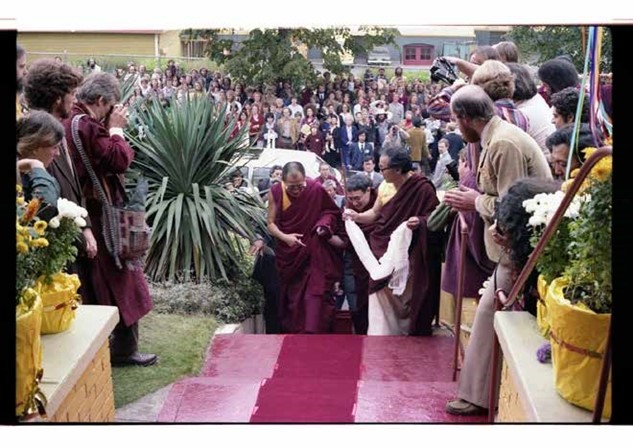
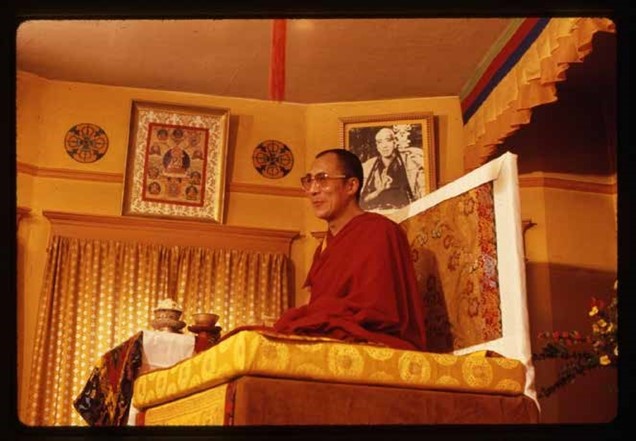
The 1960s: Sakya Journey
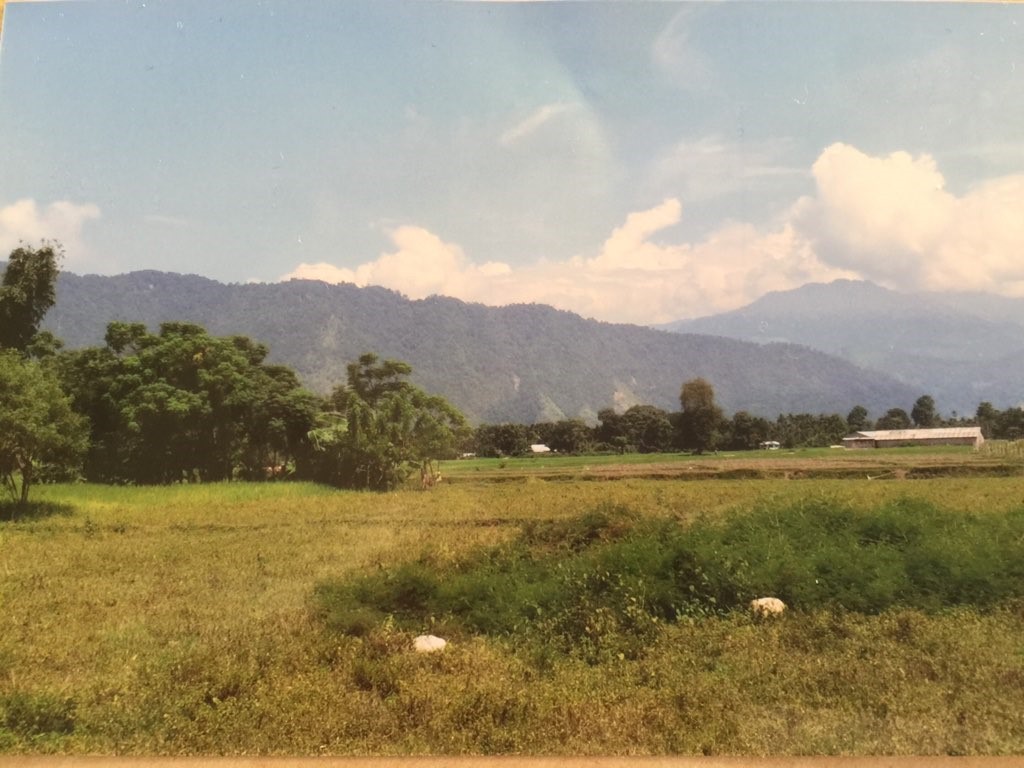
The story of the Royal Family’s Journey from Tibet to India to America and back to India
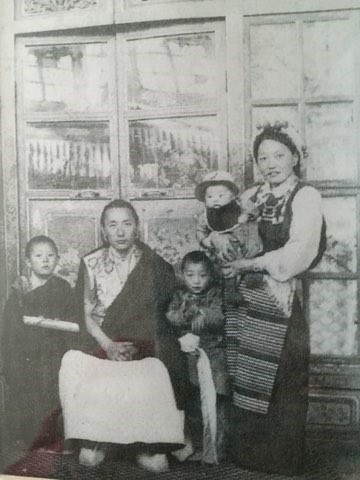
Where the journey began: Lhasa, Tibet 1959
This family photo was taken in Lhasa just before the Sakya royal family left Tibet. Mati Rinpoche was just over a year. The photo was taken in Lhasa during the time His Holiness Dalai Lama was receiving his Geshe degree. Khöndung Mati Rinpoche was born in Lhasa during this time. The Sakya family left two days after H.H. Dalai Lama left when they had to escape to India in 1959.
The Sakya Phuntsok Phodrang family and entourage arrived at the Bhutanese border after crossing the Himalayan Mountains on yaks, horses and on foot. There were close to 2000 people at the Bhutan border. They were held in between the Tibet and Druktsampa Bhutan border for 3 weeks. Tibetan refugees were sent different routes to reach India. The Sakya family came through the Phuntsoling border which is now Jaigaon. As soon as they got to India the Indian government helped them find a place to stay. They stayed in Jaigaon at least a week at an old army base. It was very hot having just came from Tibet. Some of the sights the family saw for the first time were Indian ladies carrying water jugs on their heads and enormous buffalo wallowing in the river. Sharing the river with these giant animals when bathing and collecting water from the river was somewhat daunting.

The refugees were being sorted by the Indian government to go to different destinations. Younger monks and nuns were sent to South India. Mothers, children, and elders were sent to Jaigaon. The family was separated for a short time while H.H. Trinley Rinpoche and Mangthola were sent to south India. H.E. Dagmo Kusho and the Khöngdungs were sent to Kalimpong. H.H. Dagchen Rinpoche joined them a few days later. While most refugees had not choice regarding their destination, if one had relatives in India, one could choose to join one’s relatives. H.H. Dagchen Rinpoche had an aunt in Sikkim so he was able to join the rest of the family a few days later. After spending some time in Sikkim, the family moved to Darjeeling.
H.H. Dagchen Rinpoche’s father, Trichen Ngawang Thuthop Wangchuk had visited Darjeeling where he knew Sherpa family patrons. The Sakya family lived in Darjeeling until moving to Seattle in 1961.
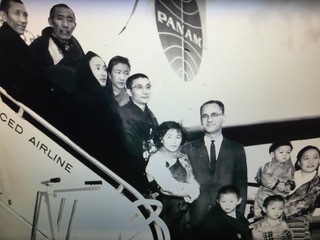
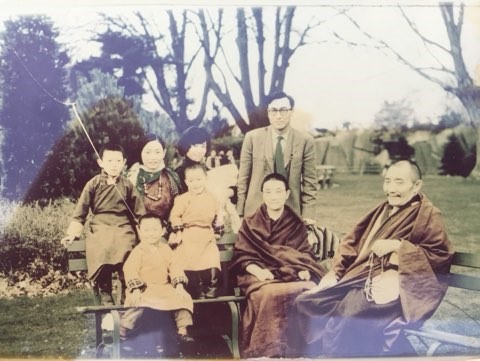
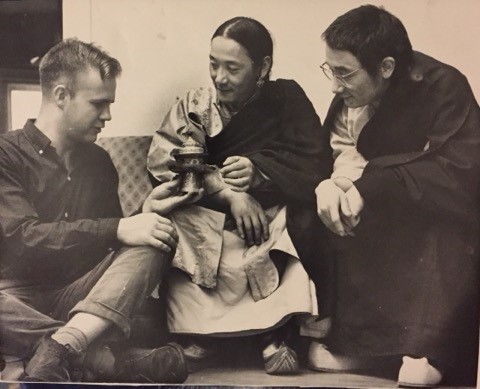
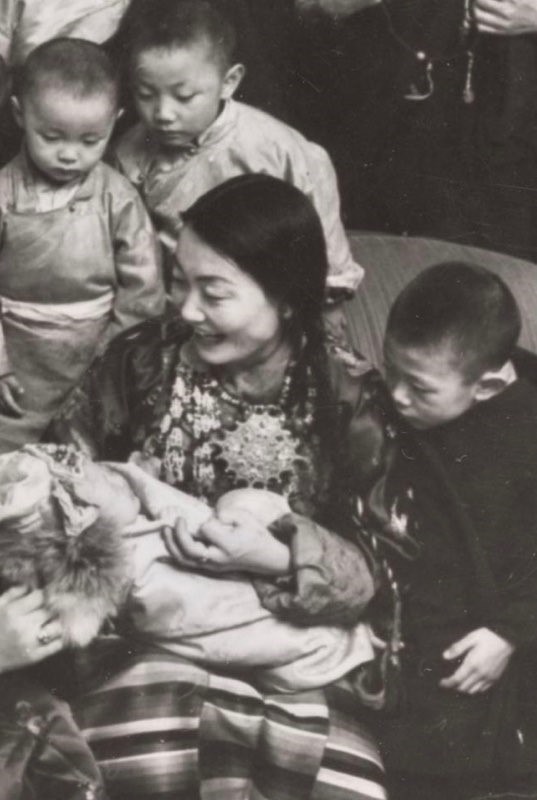
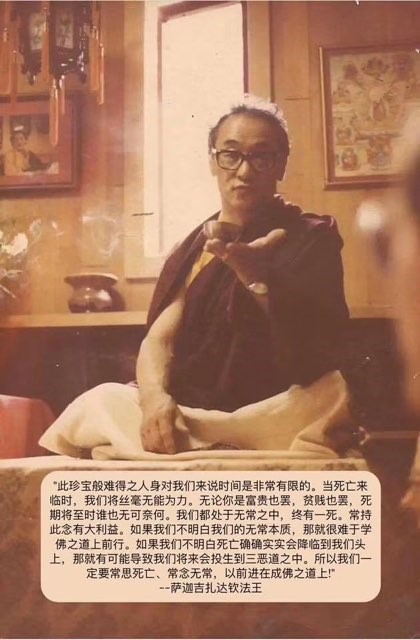
Translation of the above:
“This precious human life is hard to obtain, and time is limited for us. When death comes, there is nothing one can do, no matter if we are wealthy or poor. We are all conditioned by impermanence such that death is certain and can strike anytime. Holding this thought in mind is beneficial. It is important to understand the nature of the impermanence, or we will have difficulty improving our dharma practice. If we are not ready for death, we might be reborn in the three lower realms. Therefore we should always keep death and impermanence in our mind while advancing on the path to Buddhahood!” –H.H. Jigdal Dagchen
Translated by Kunga Lhamo
